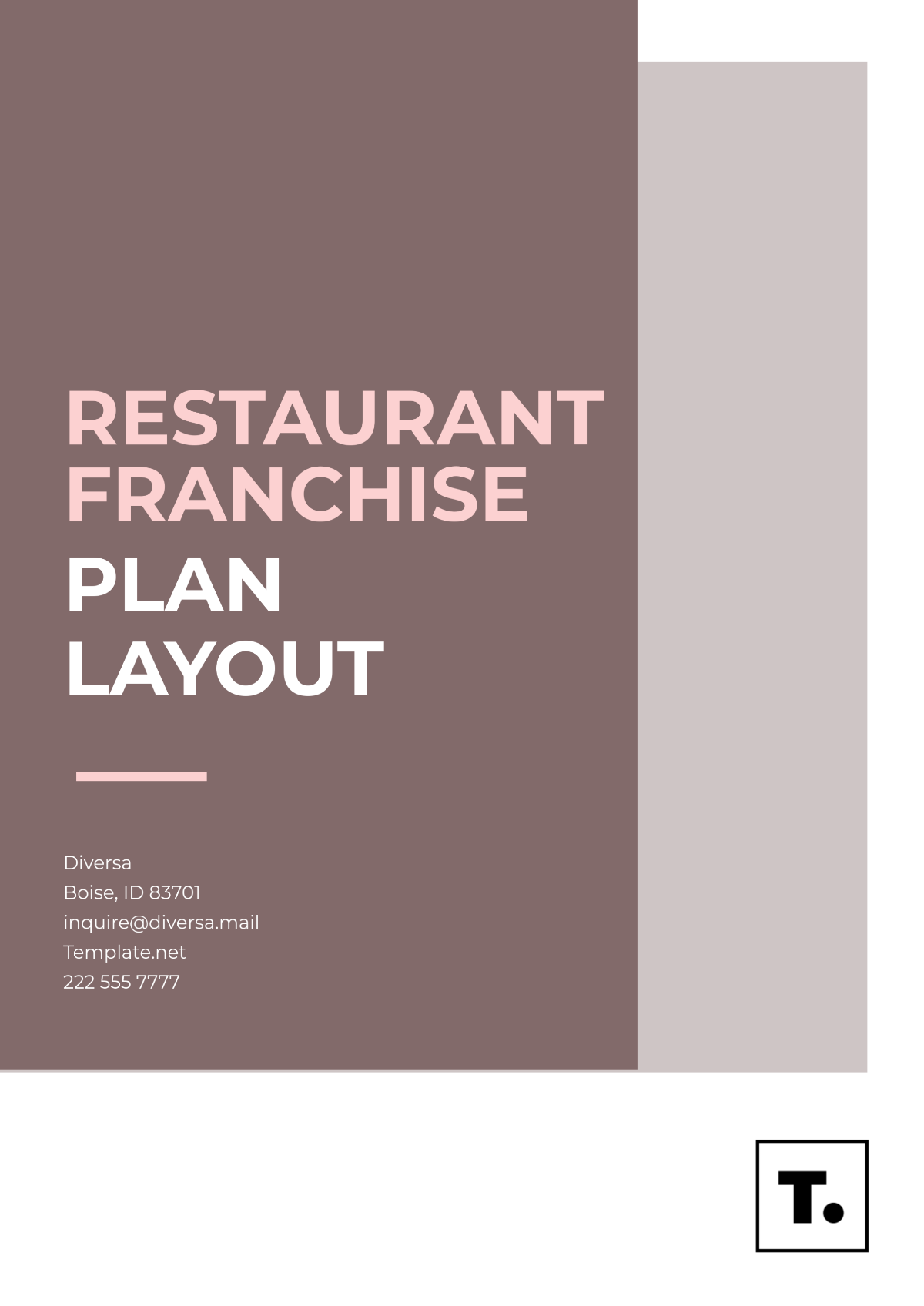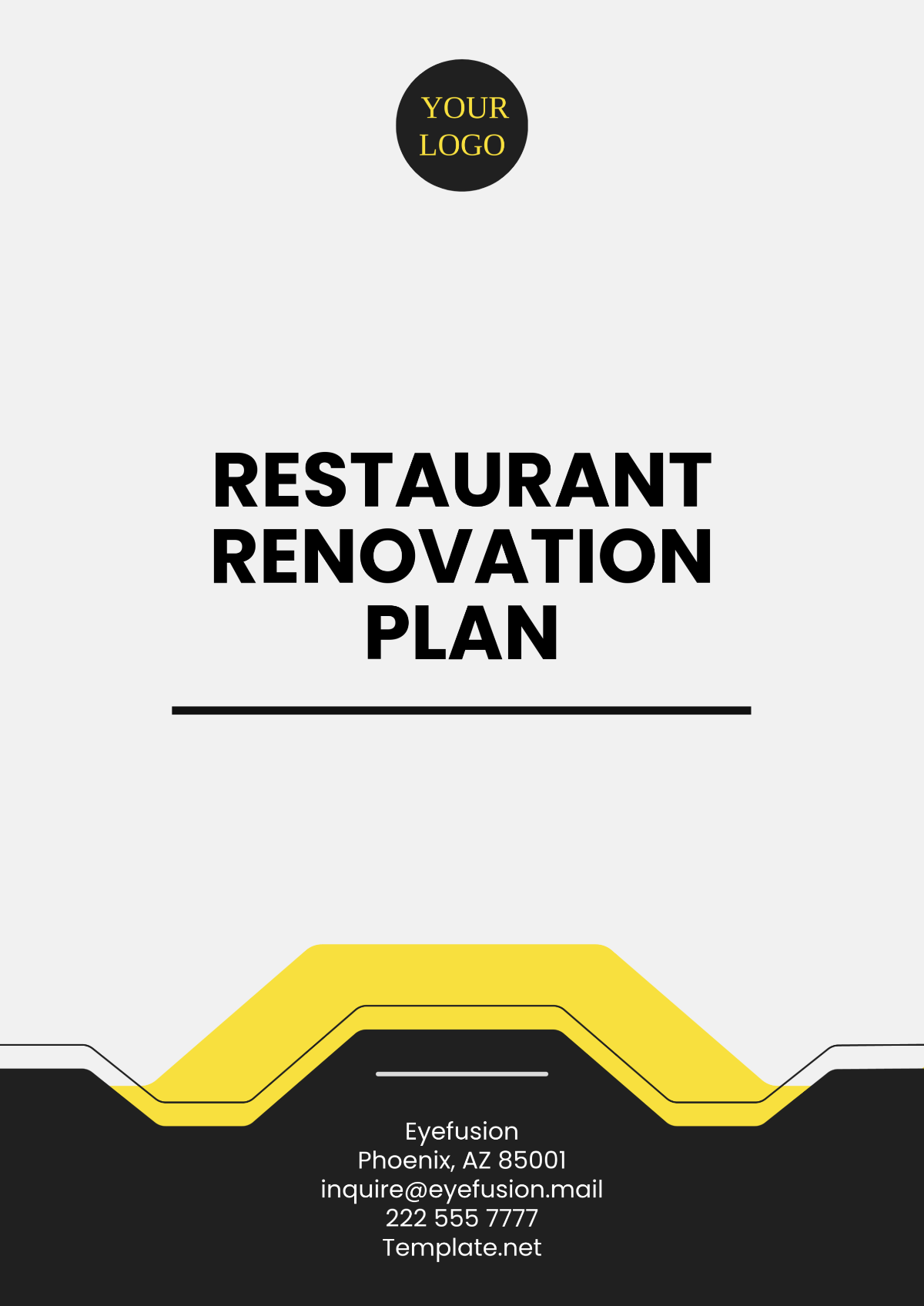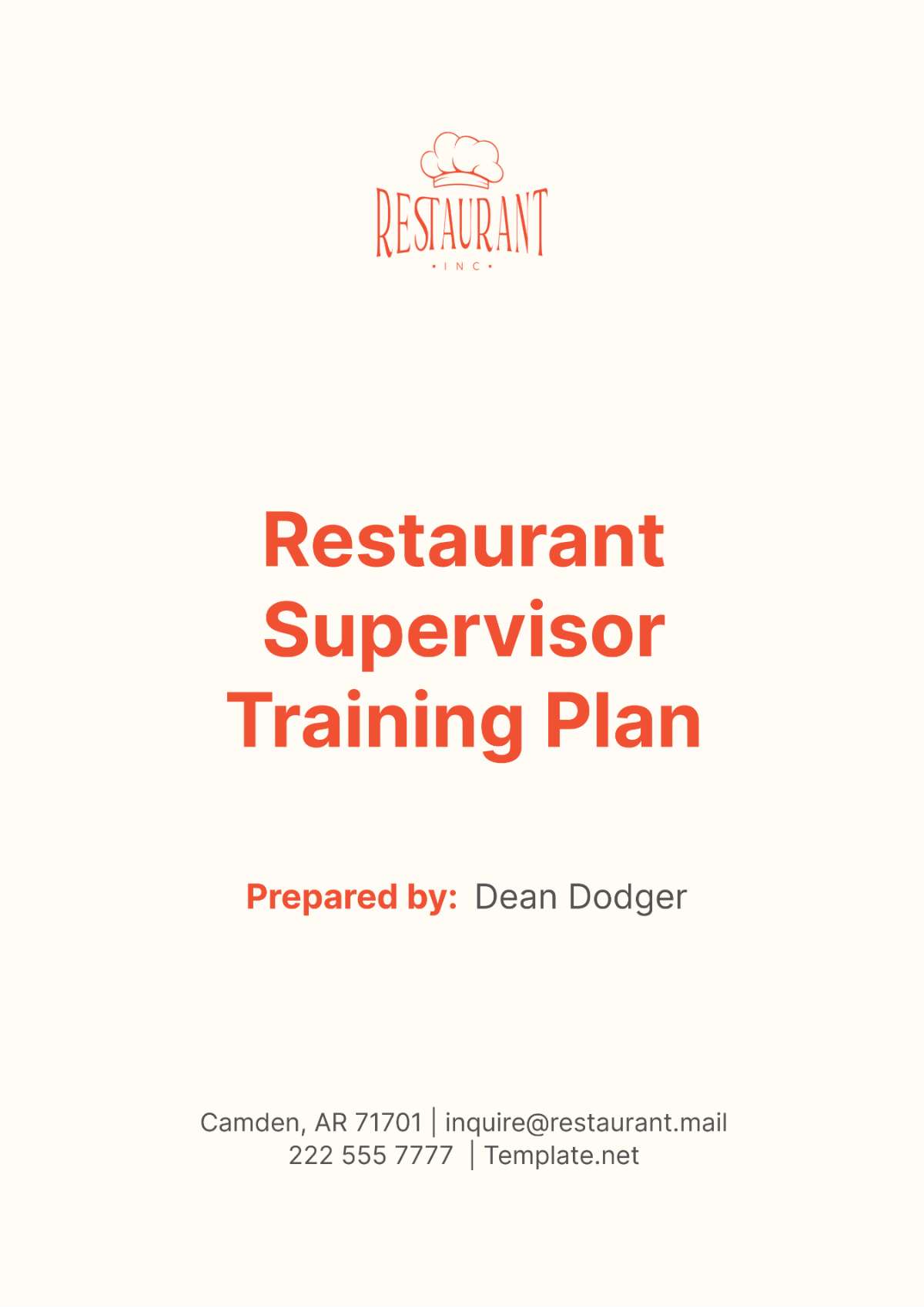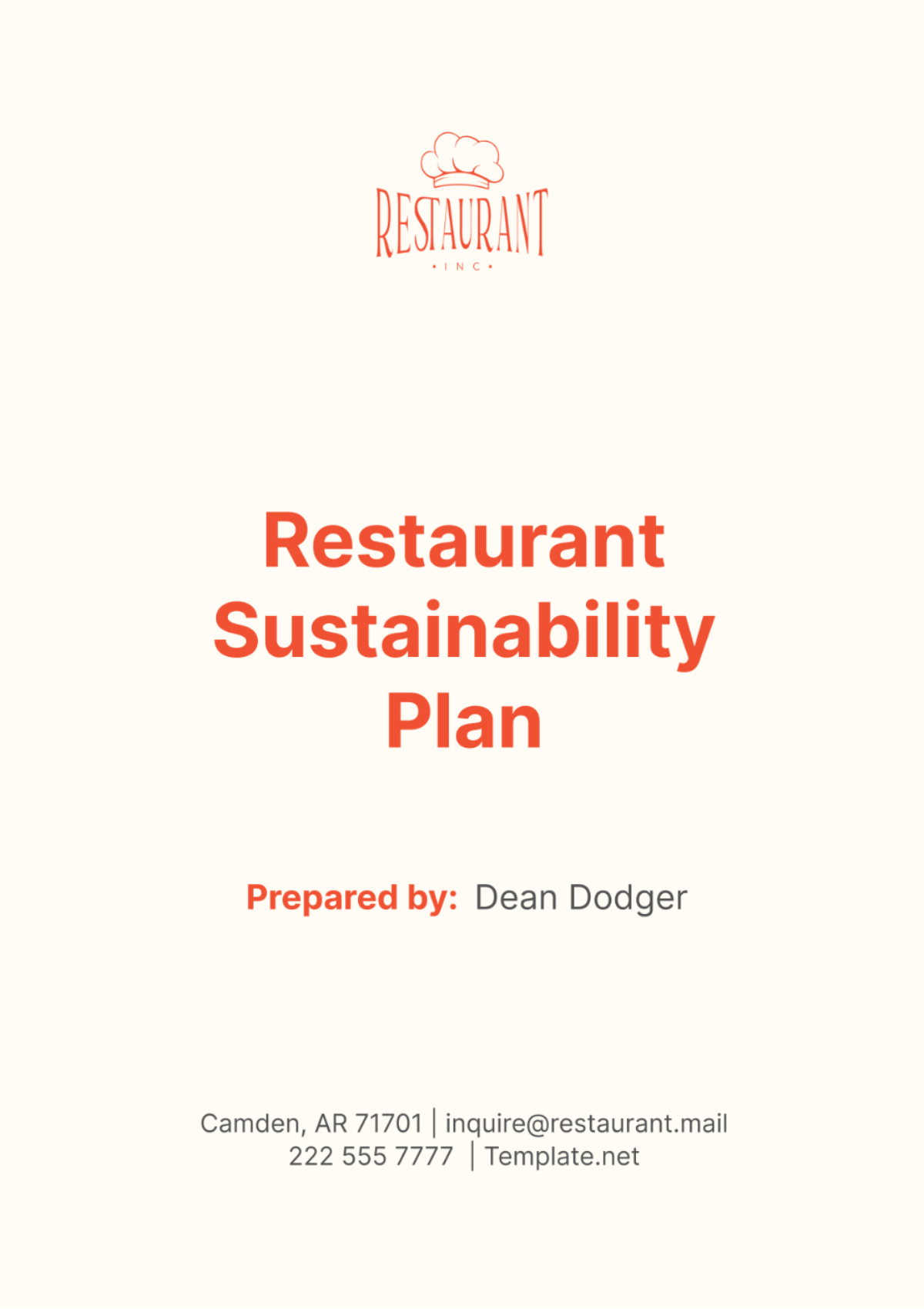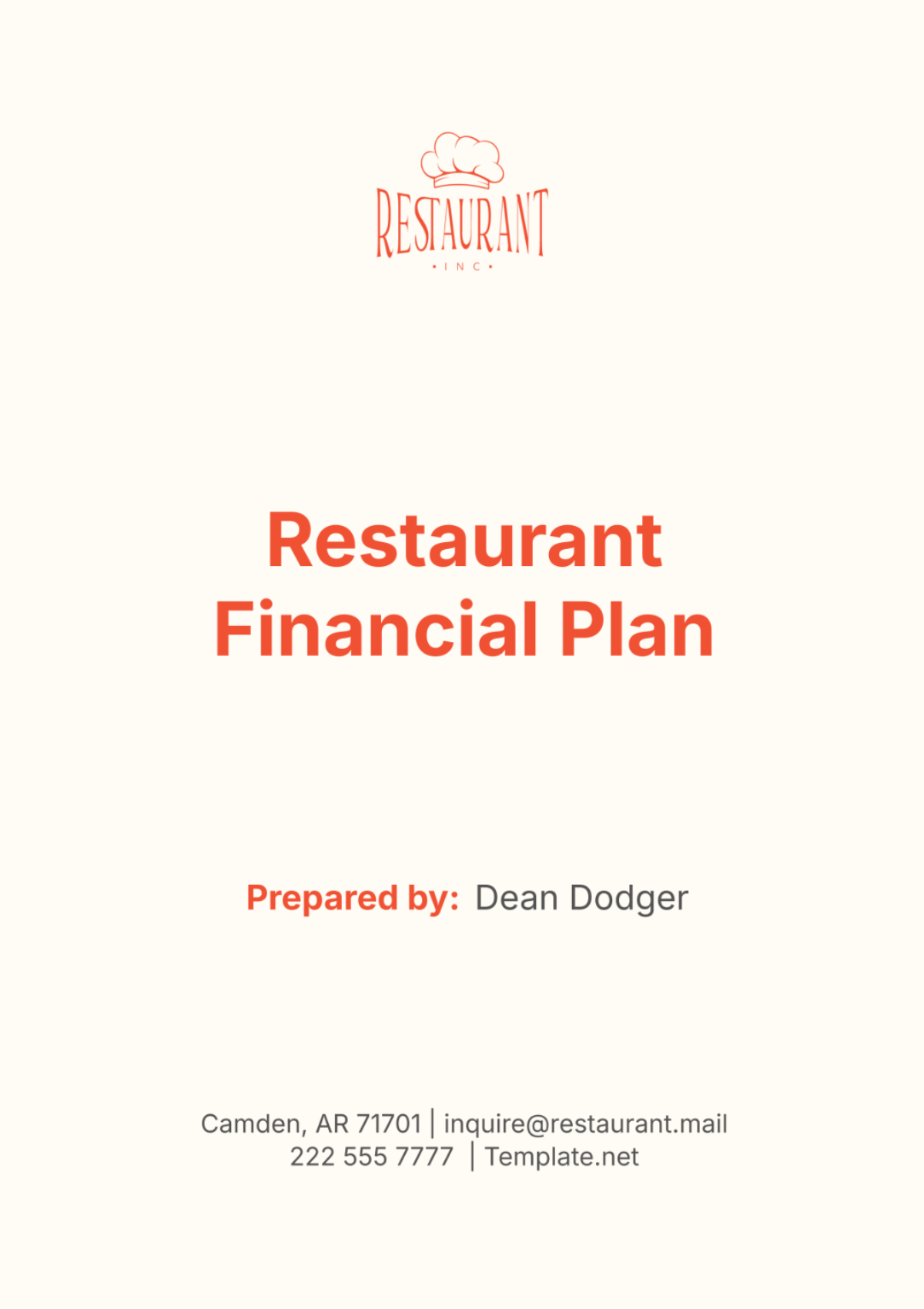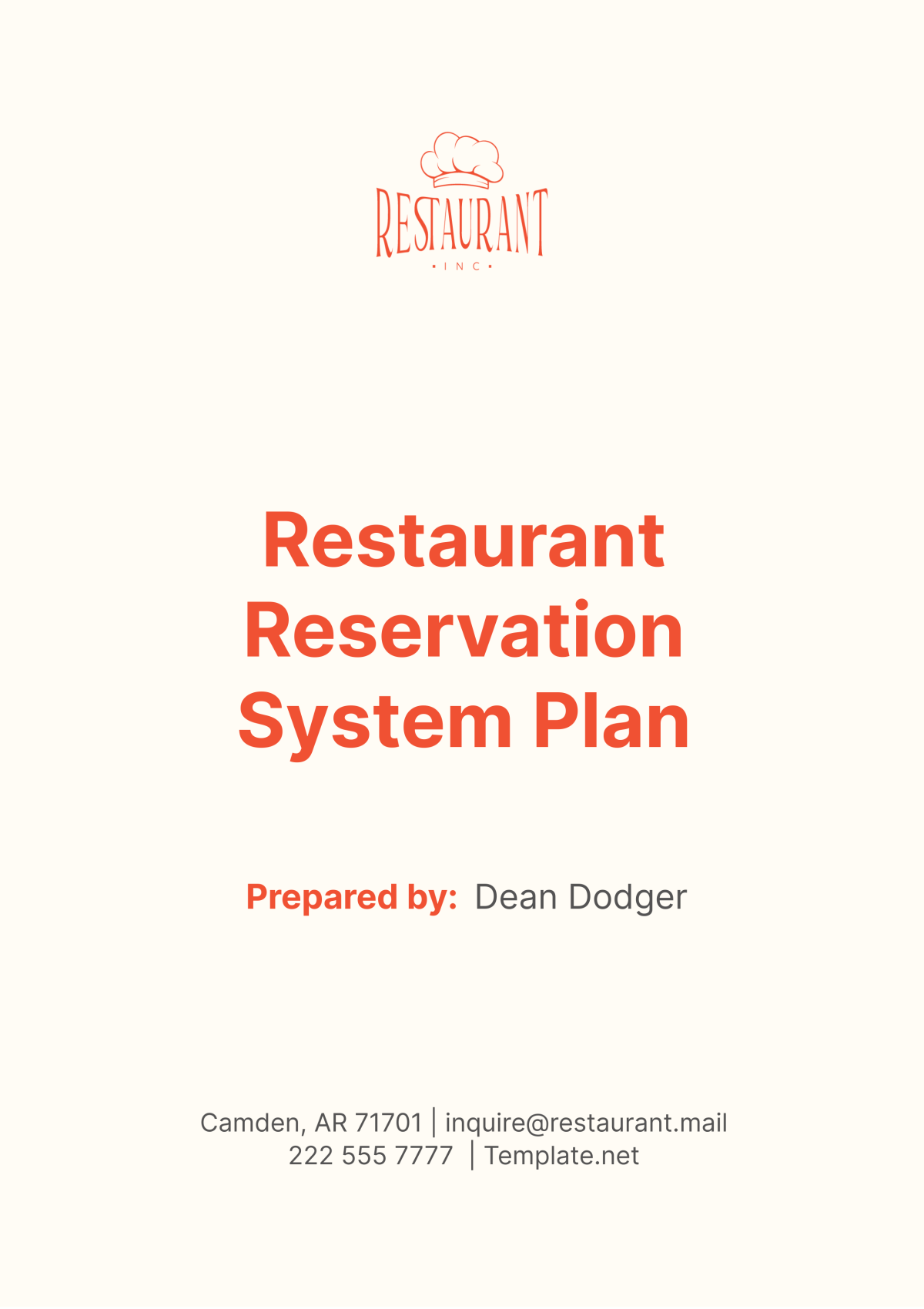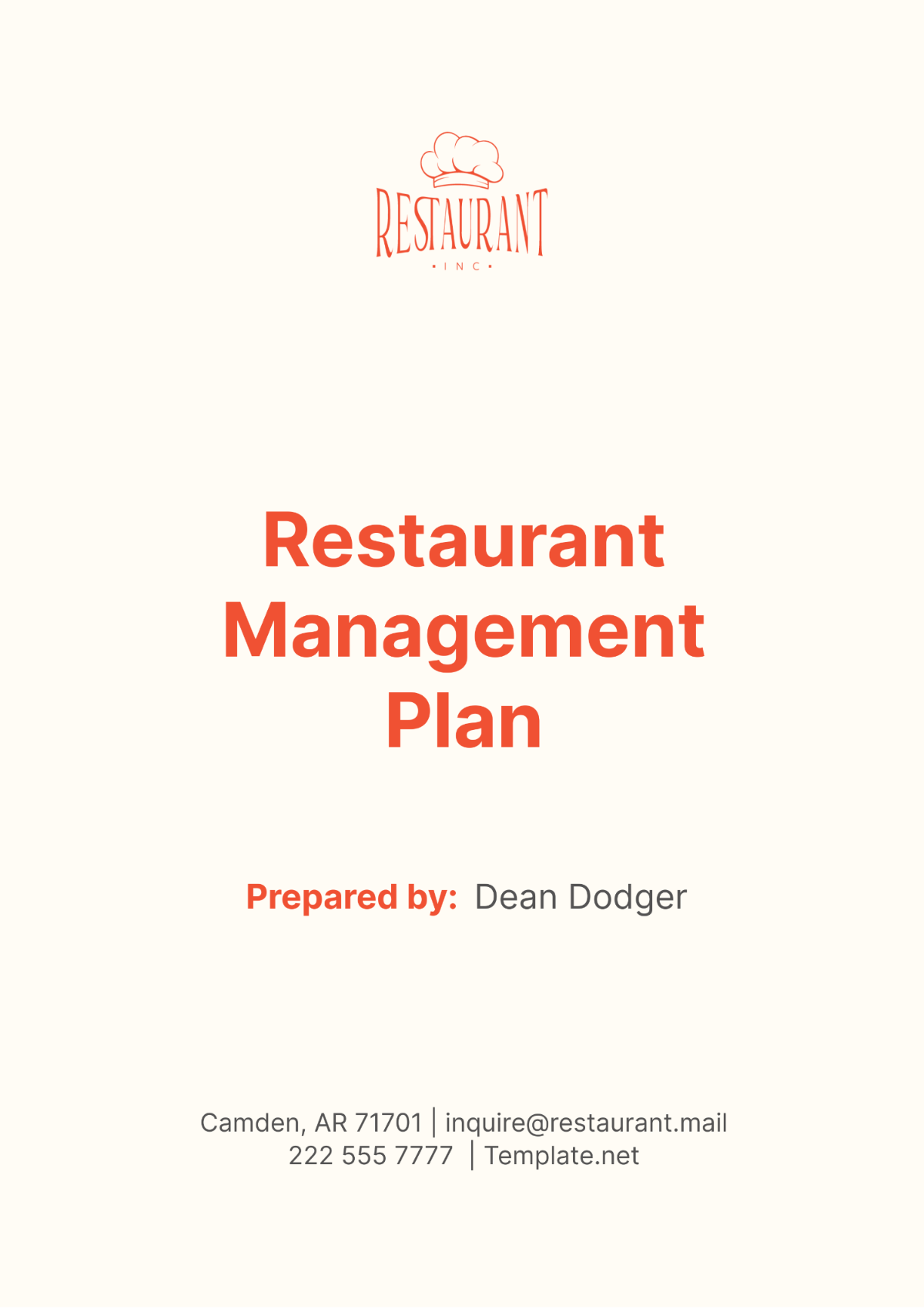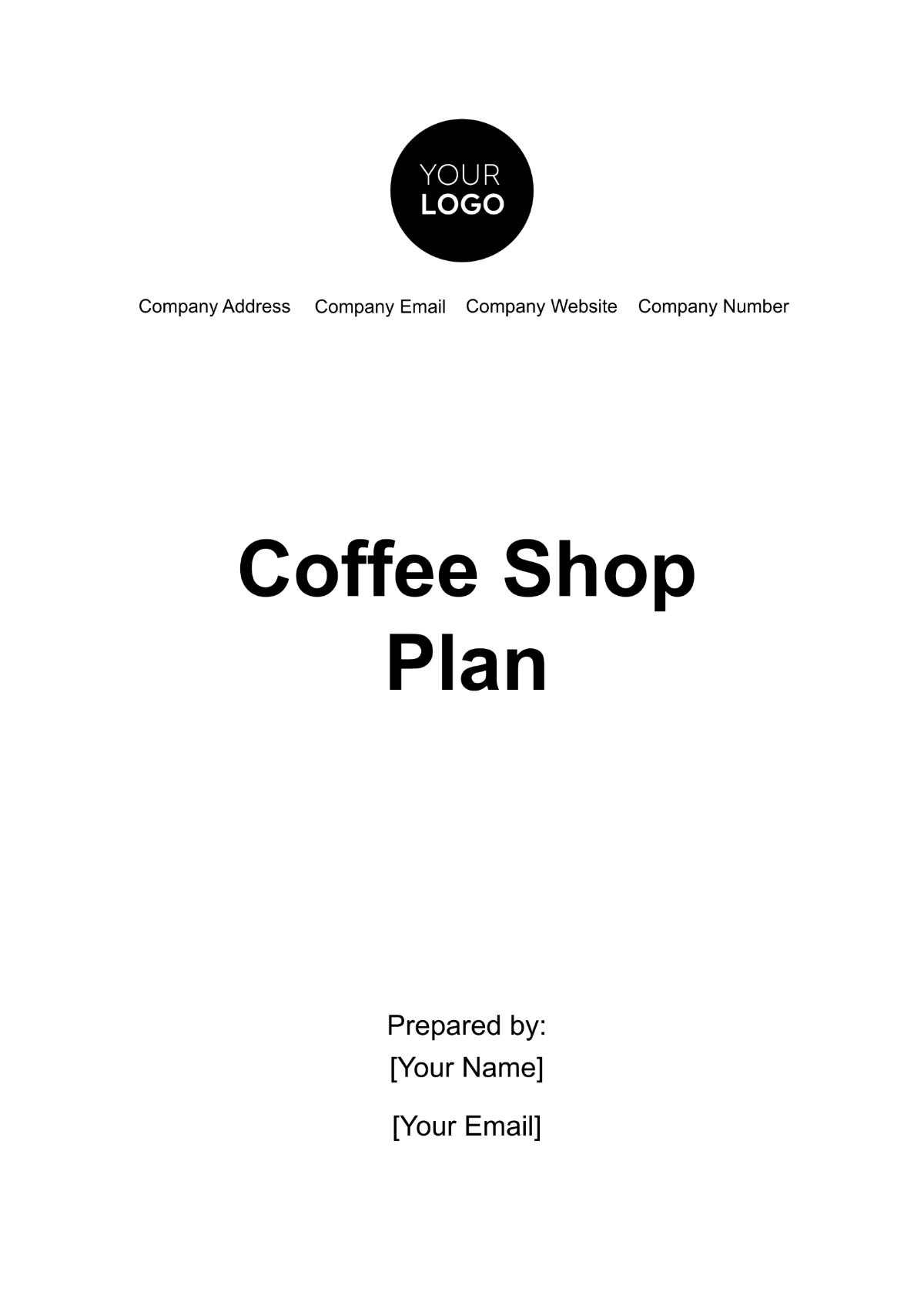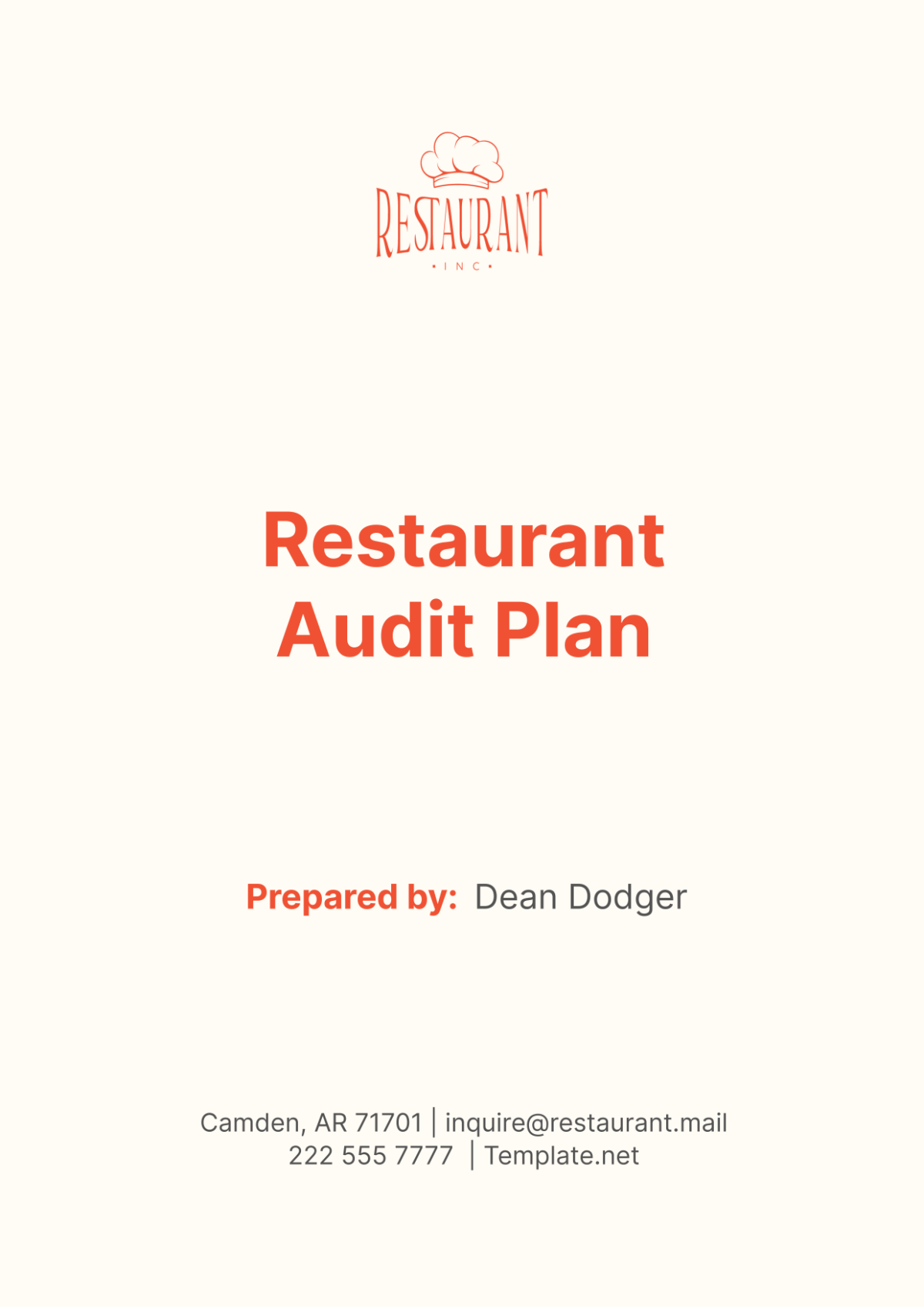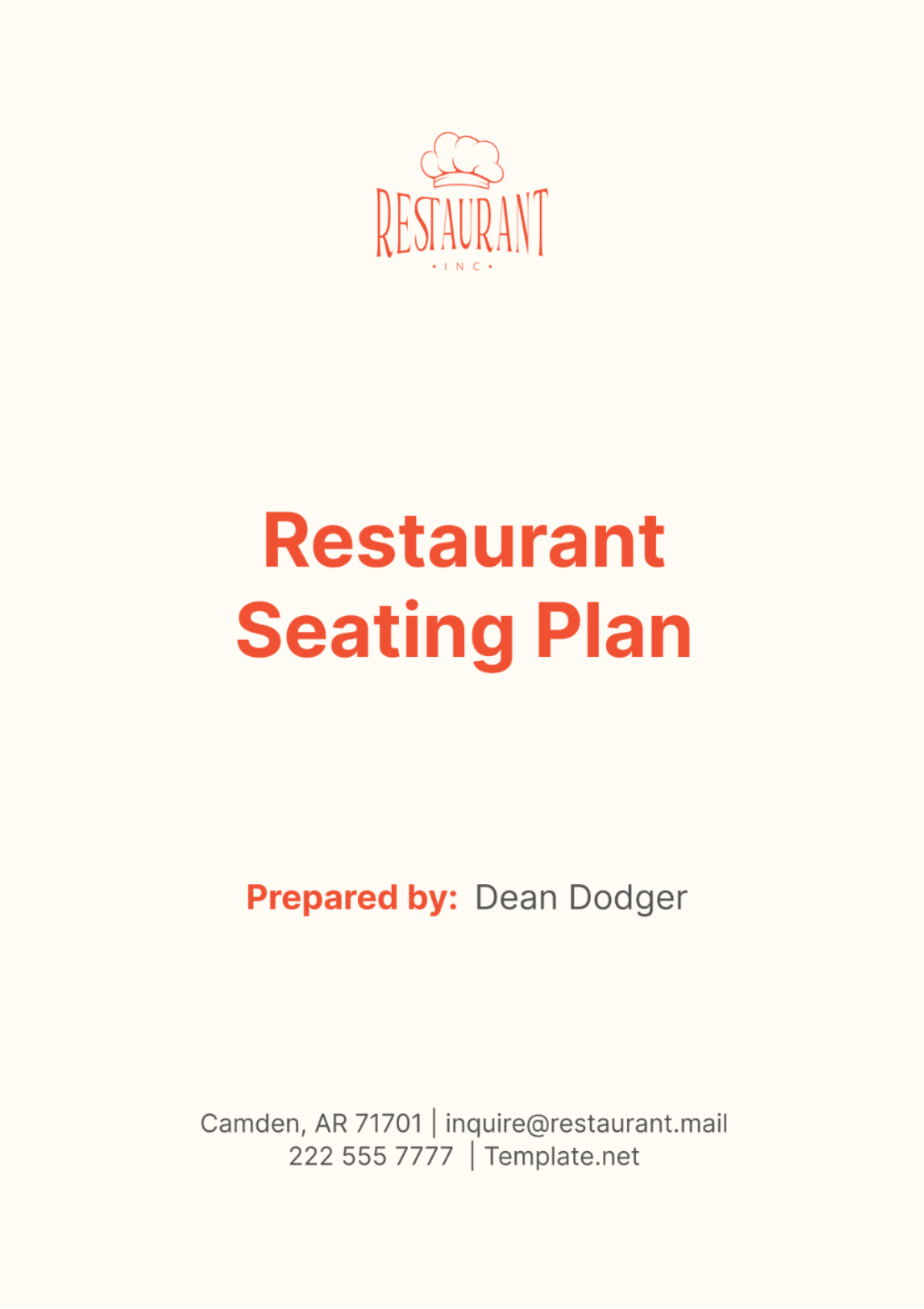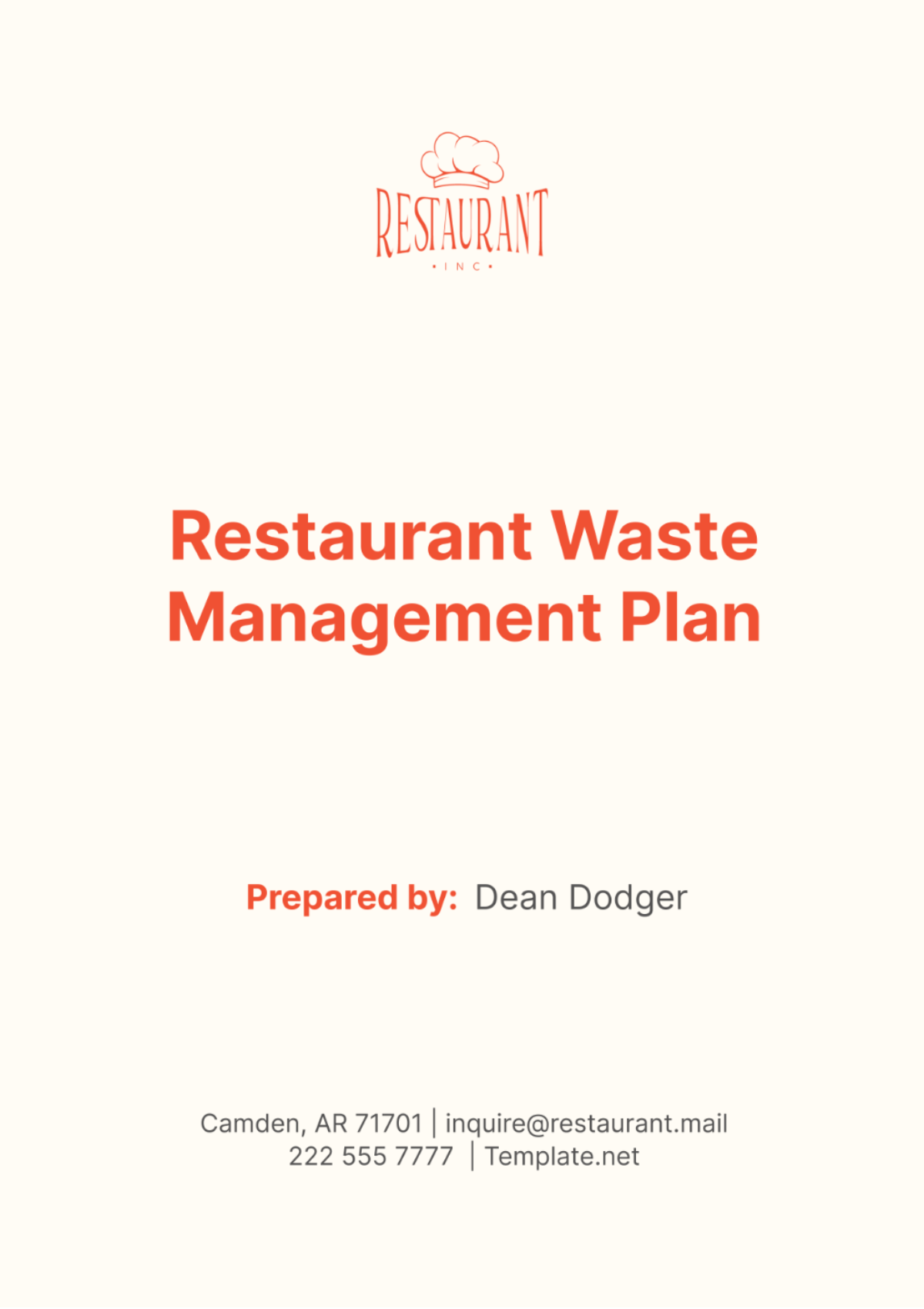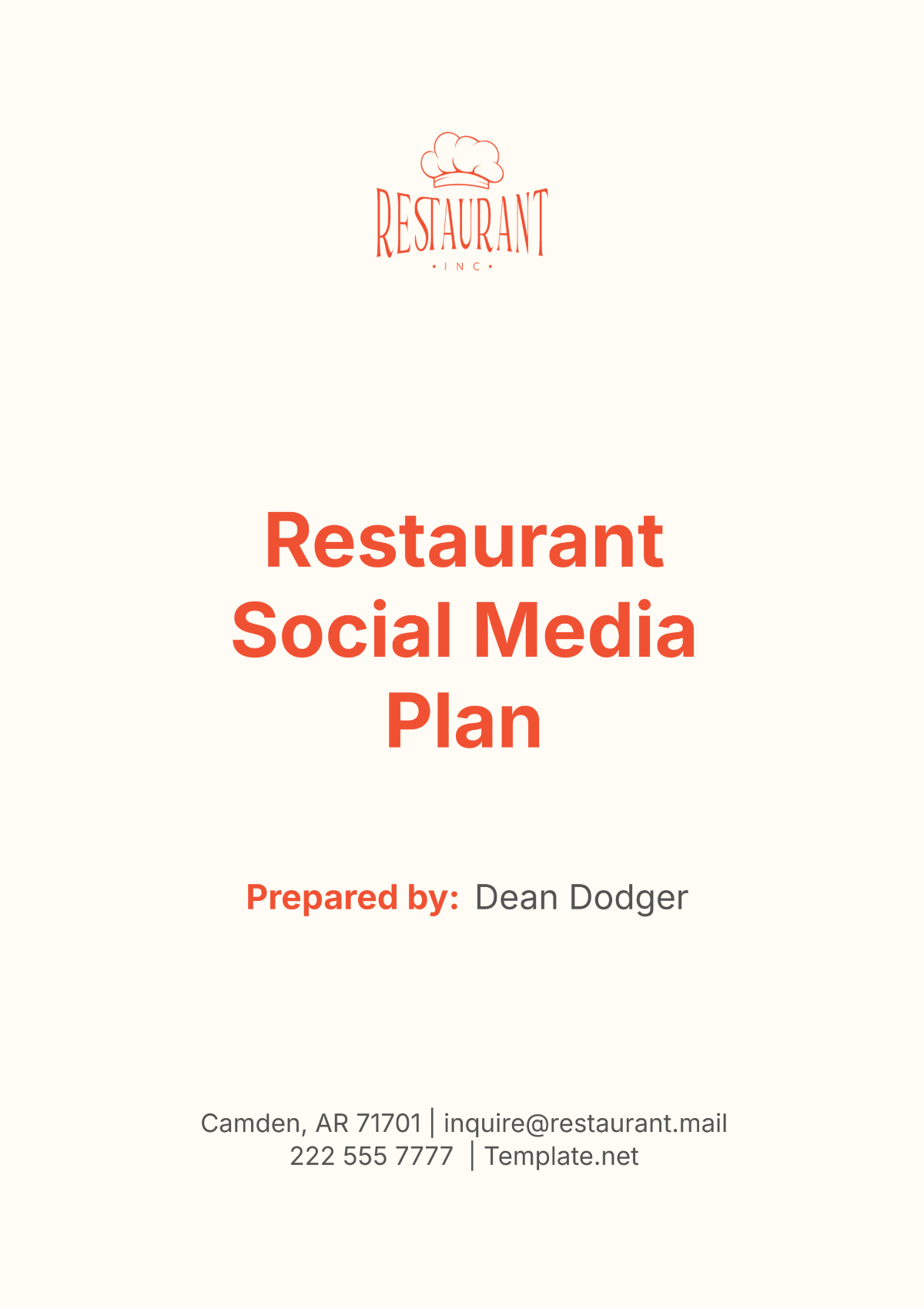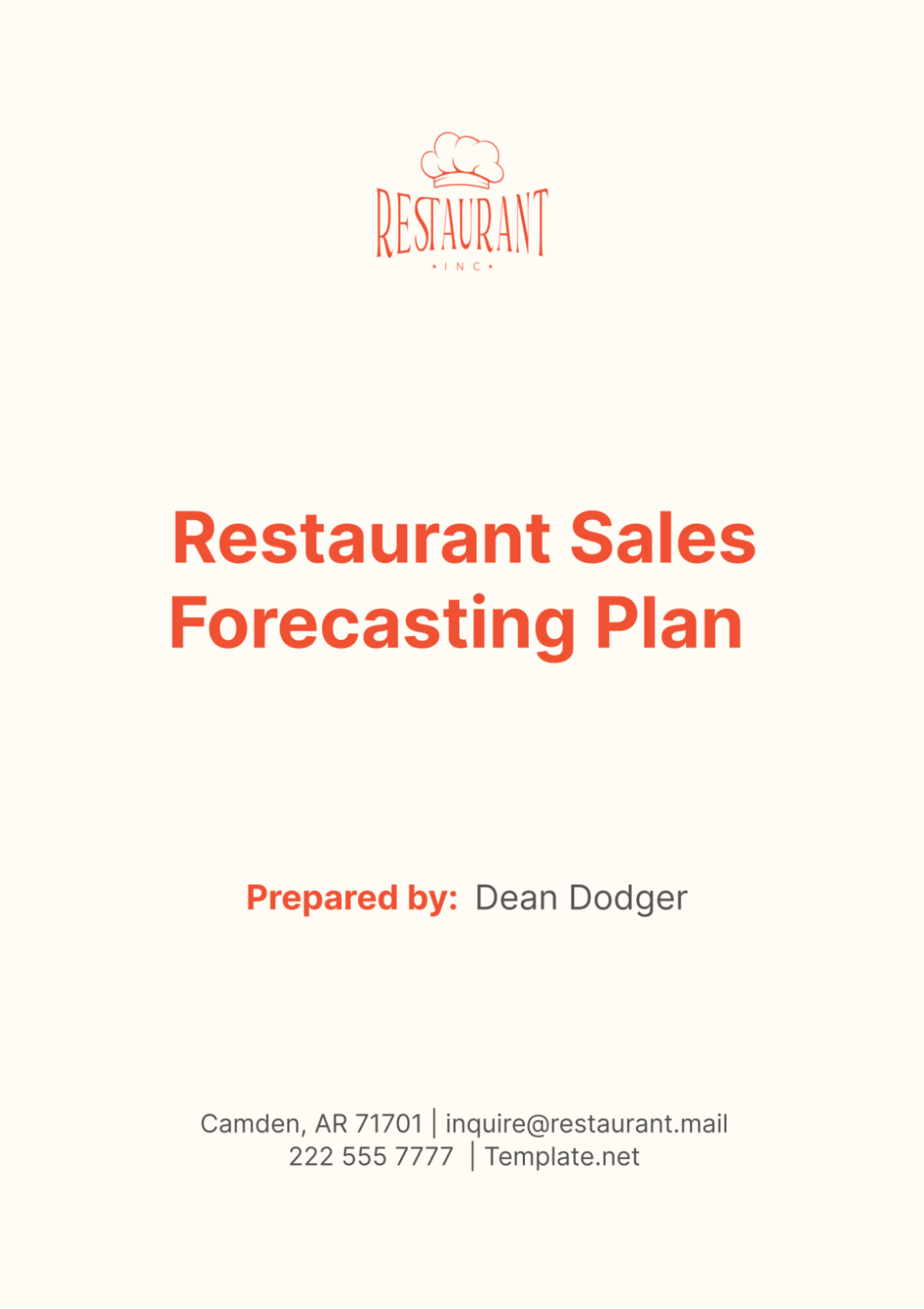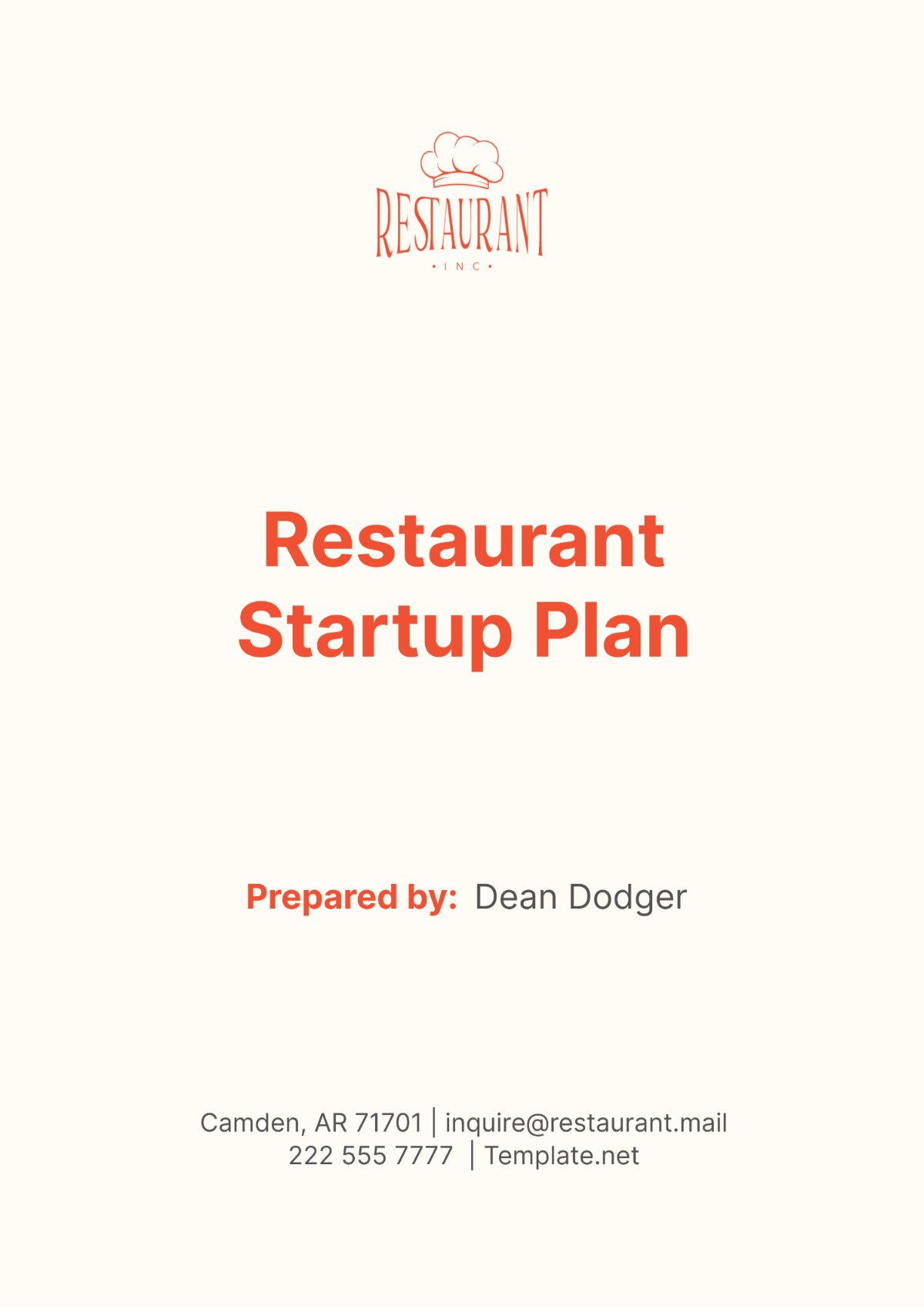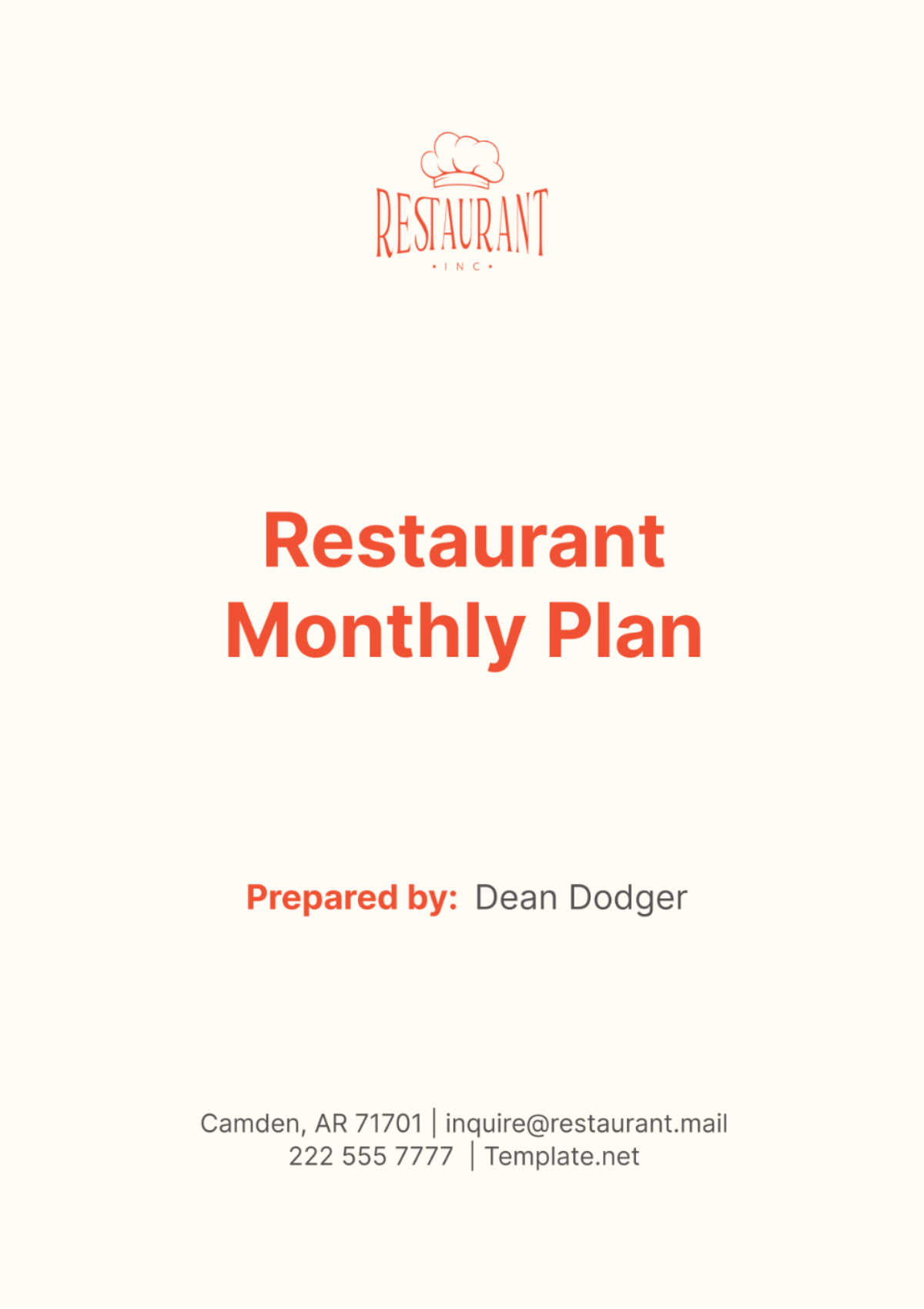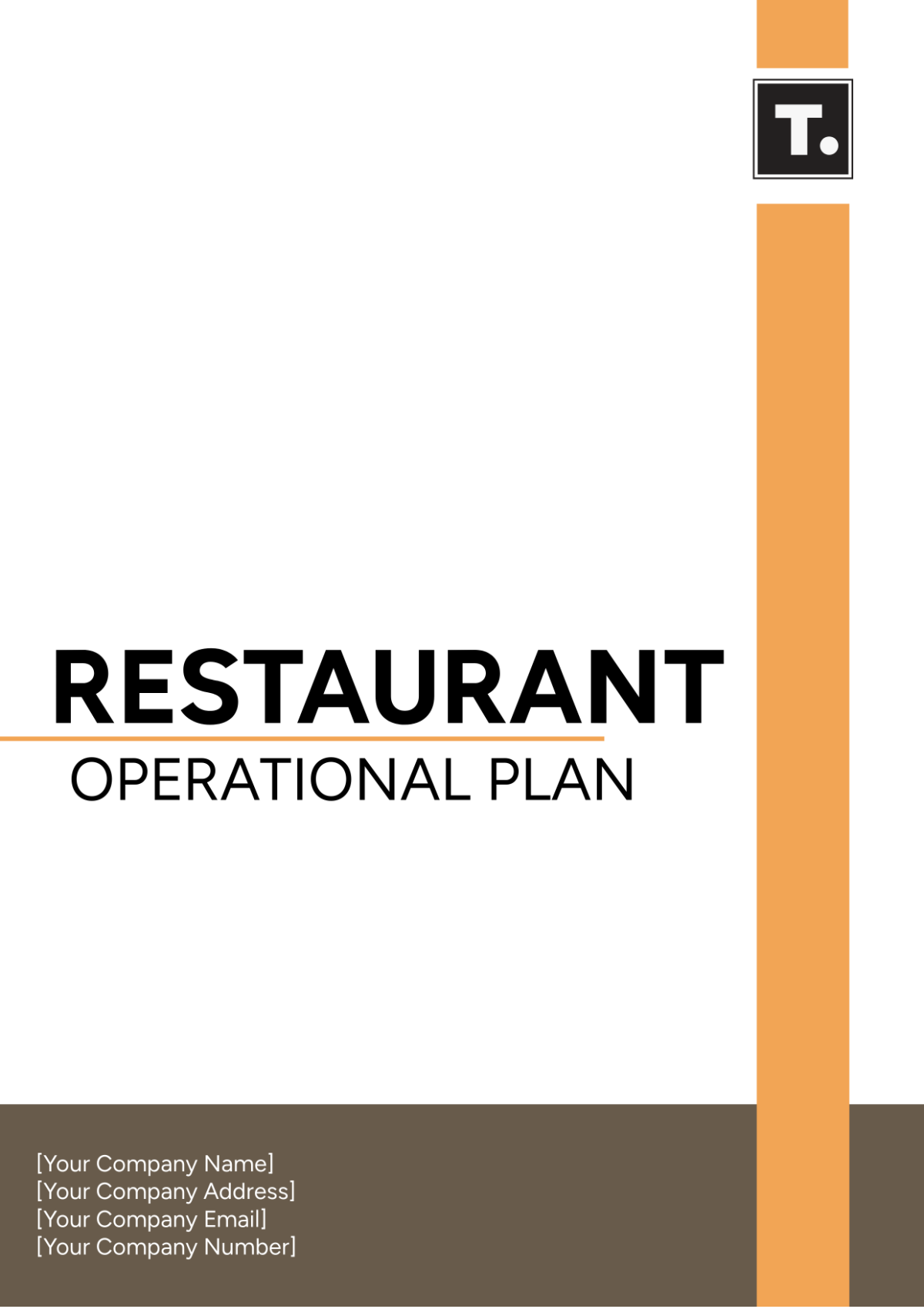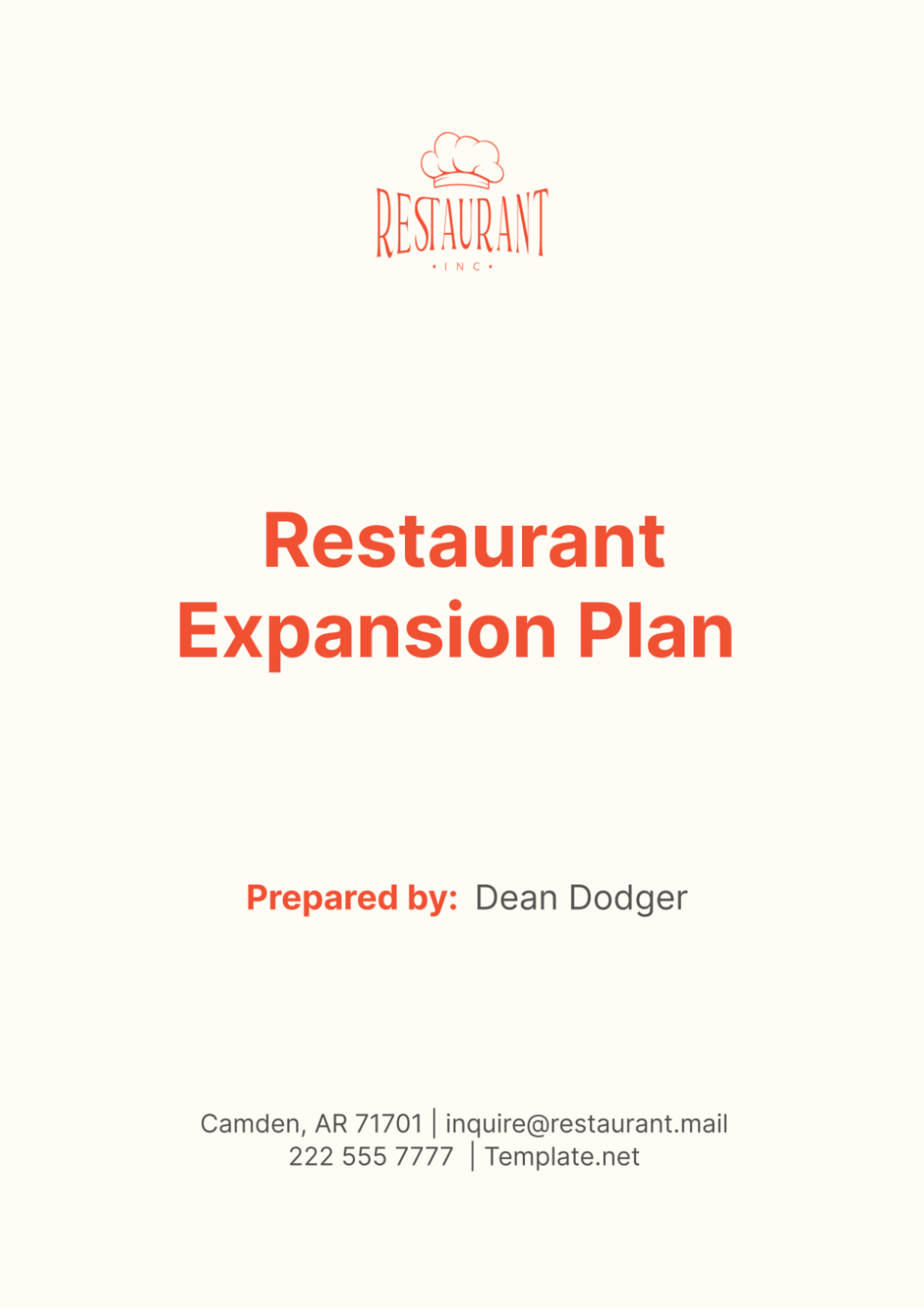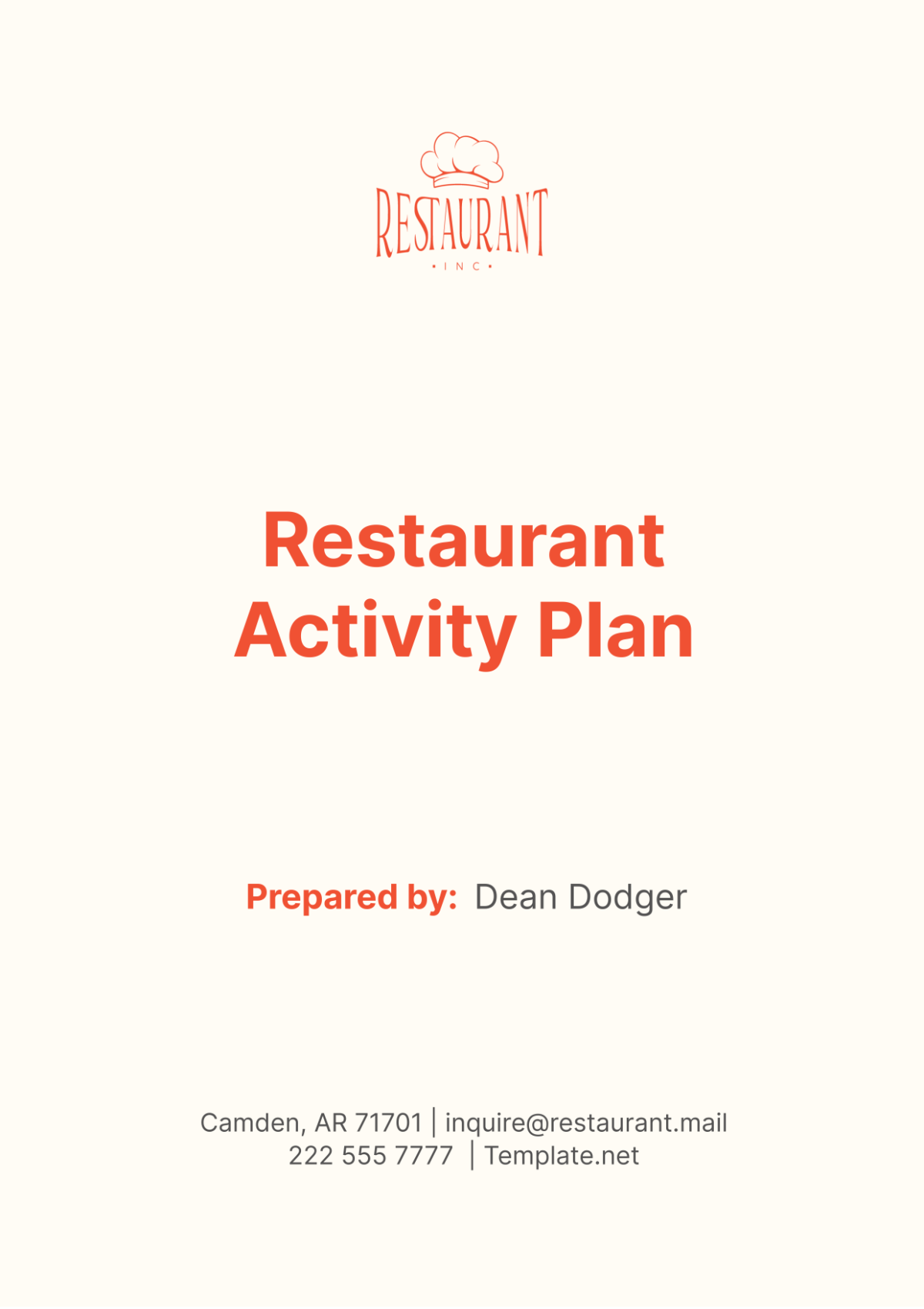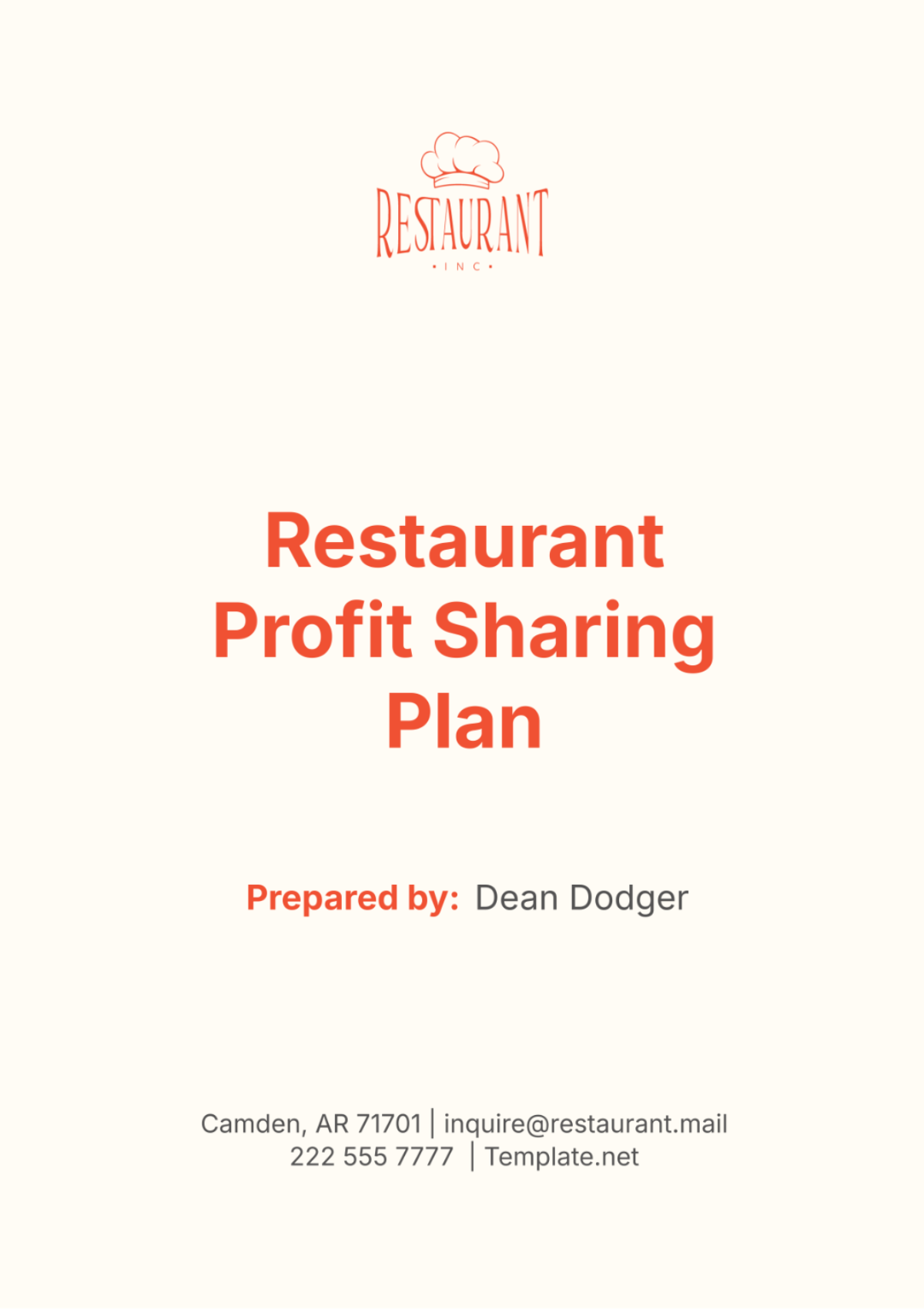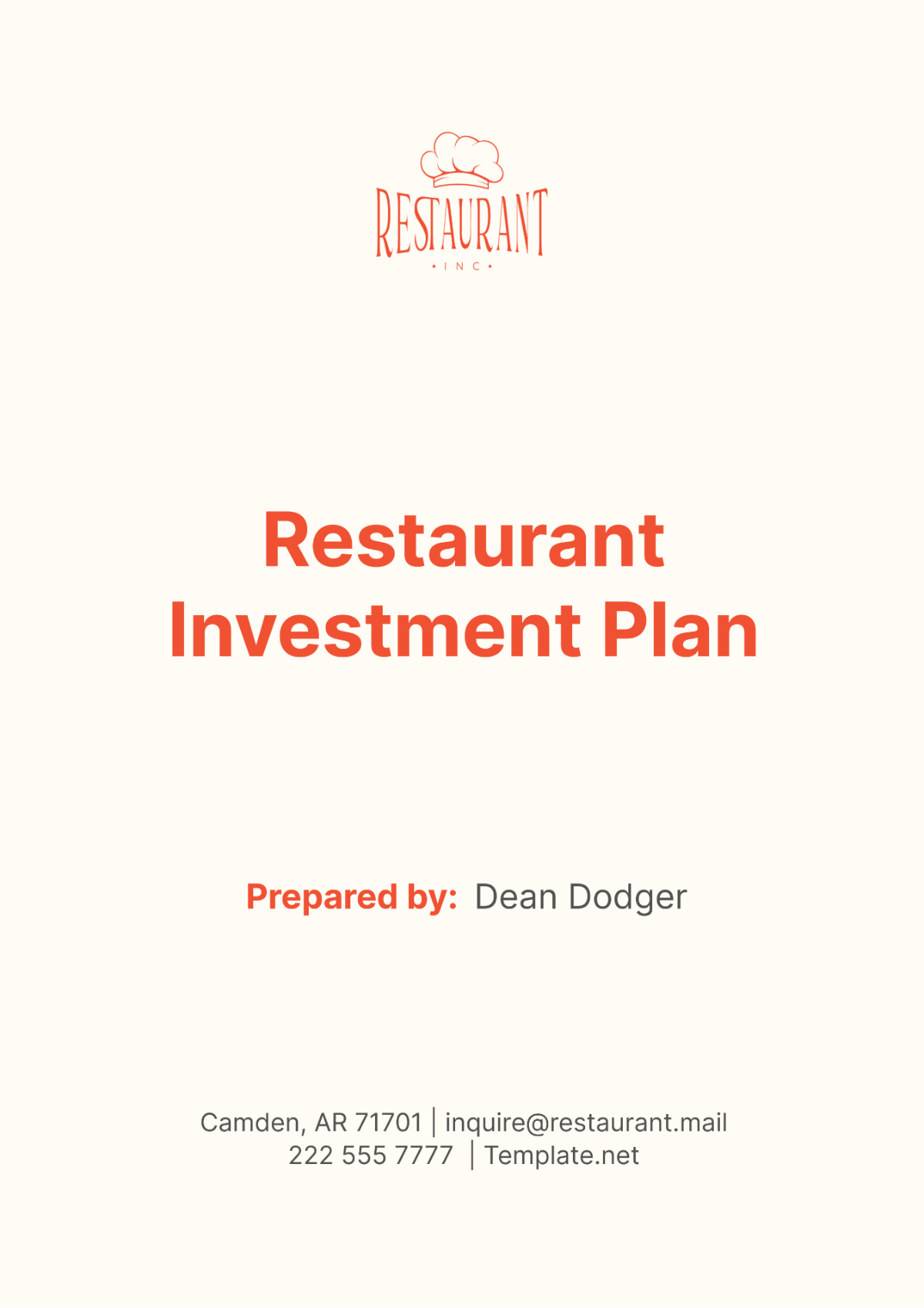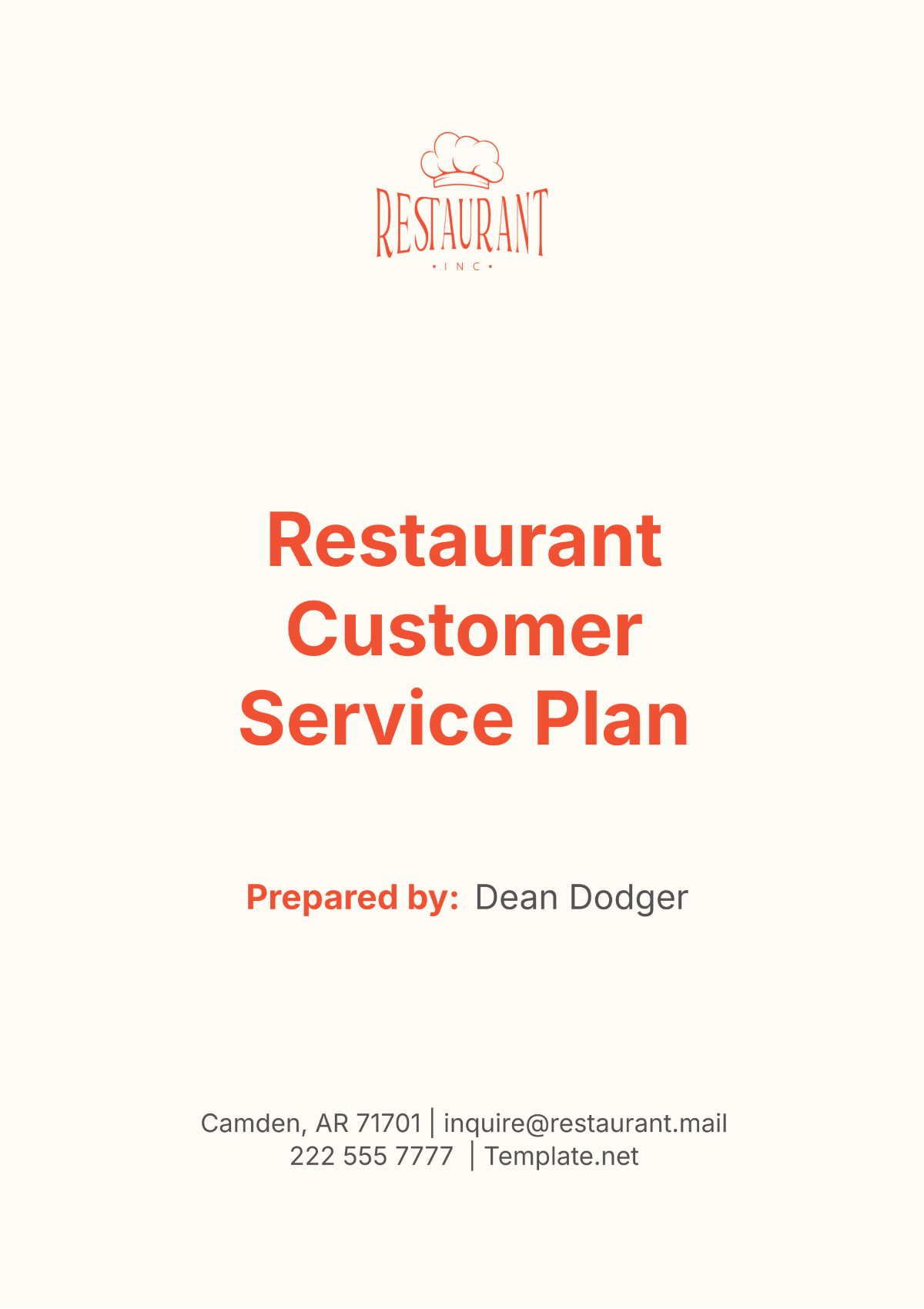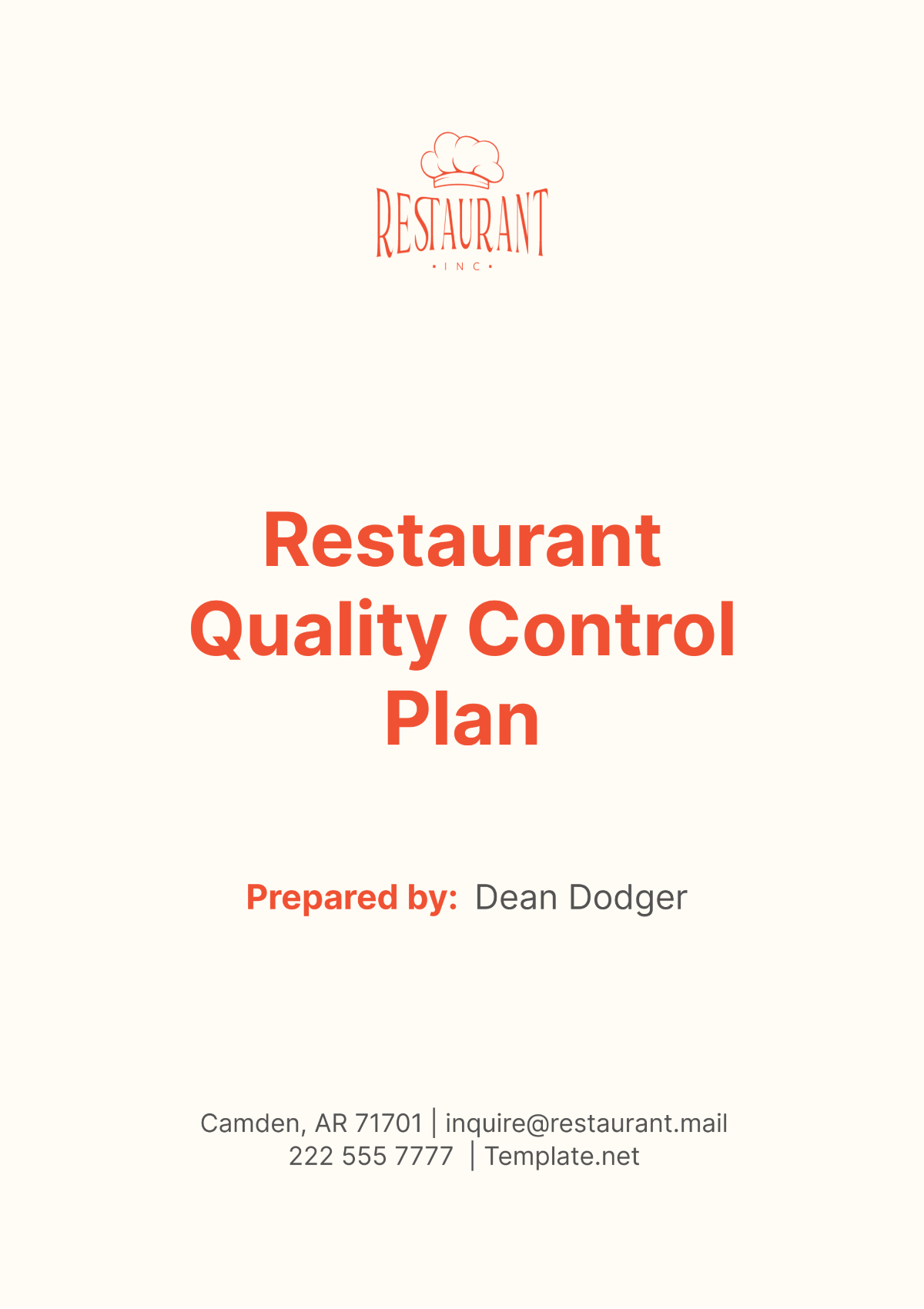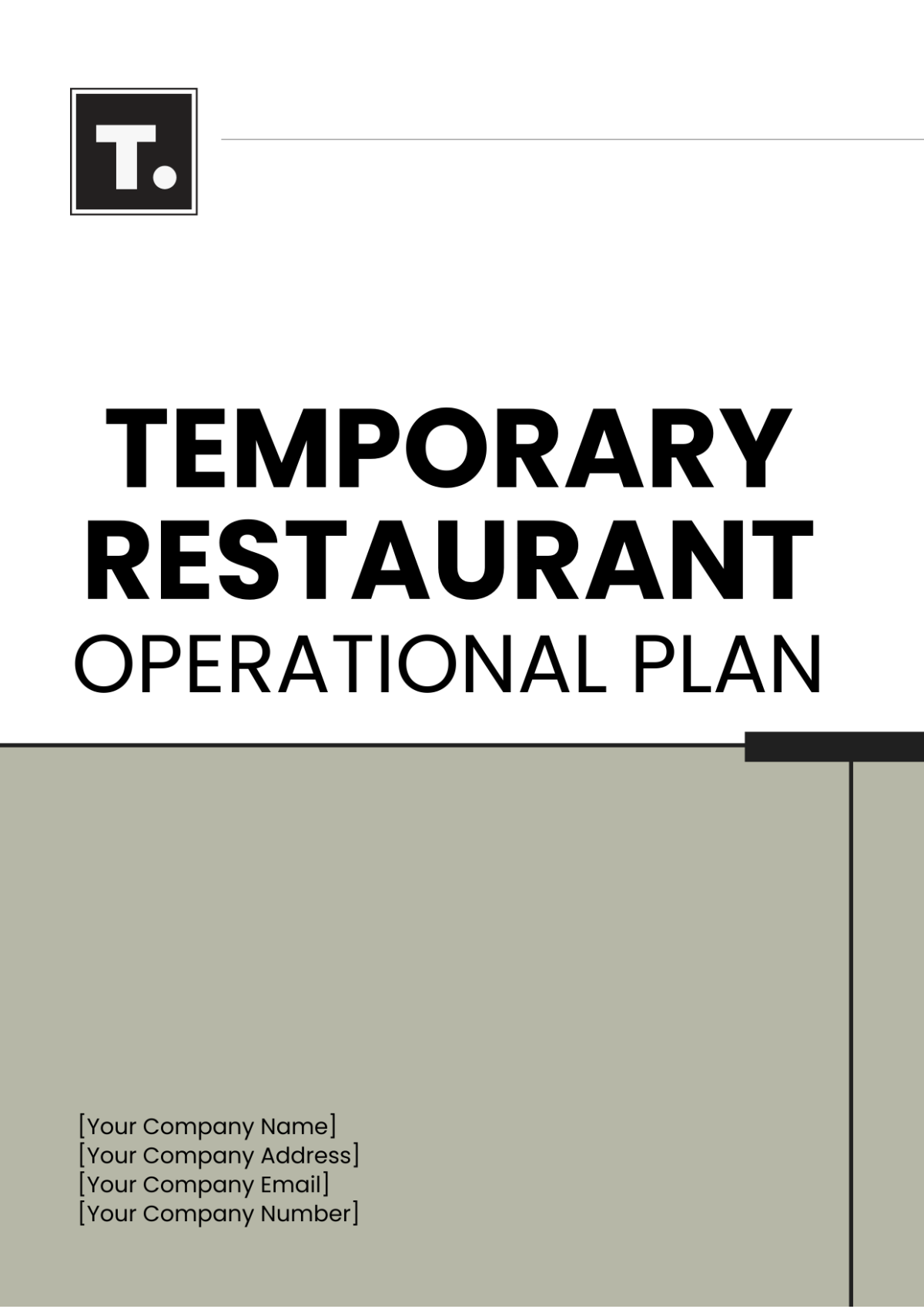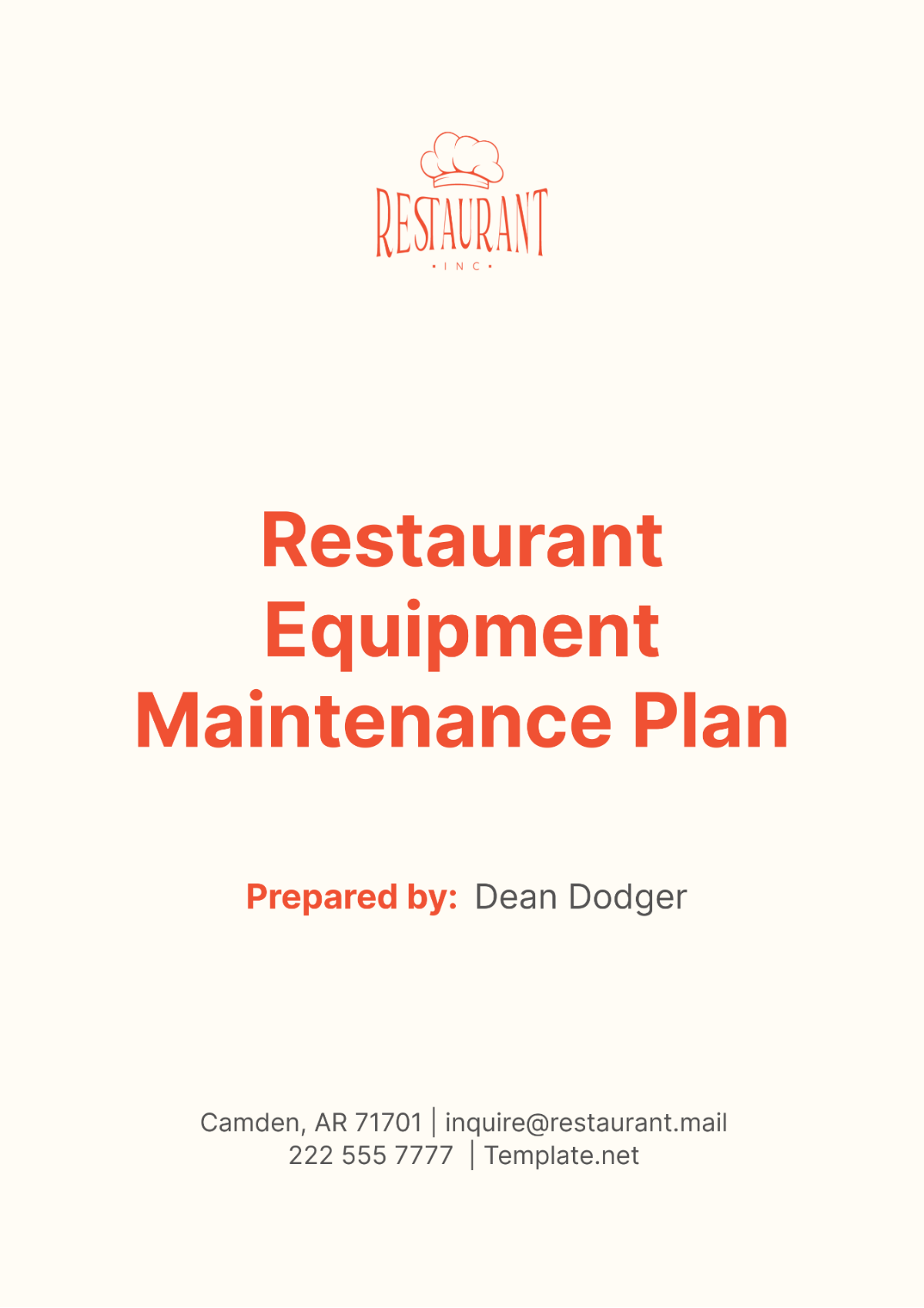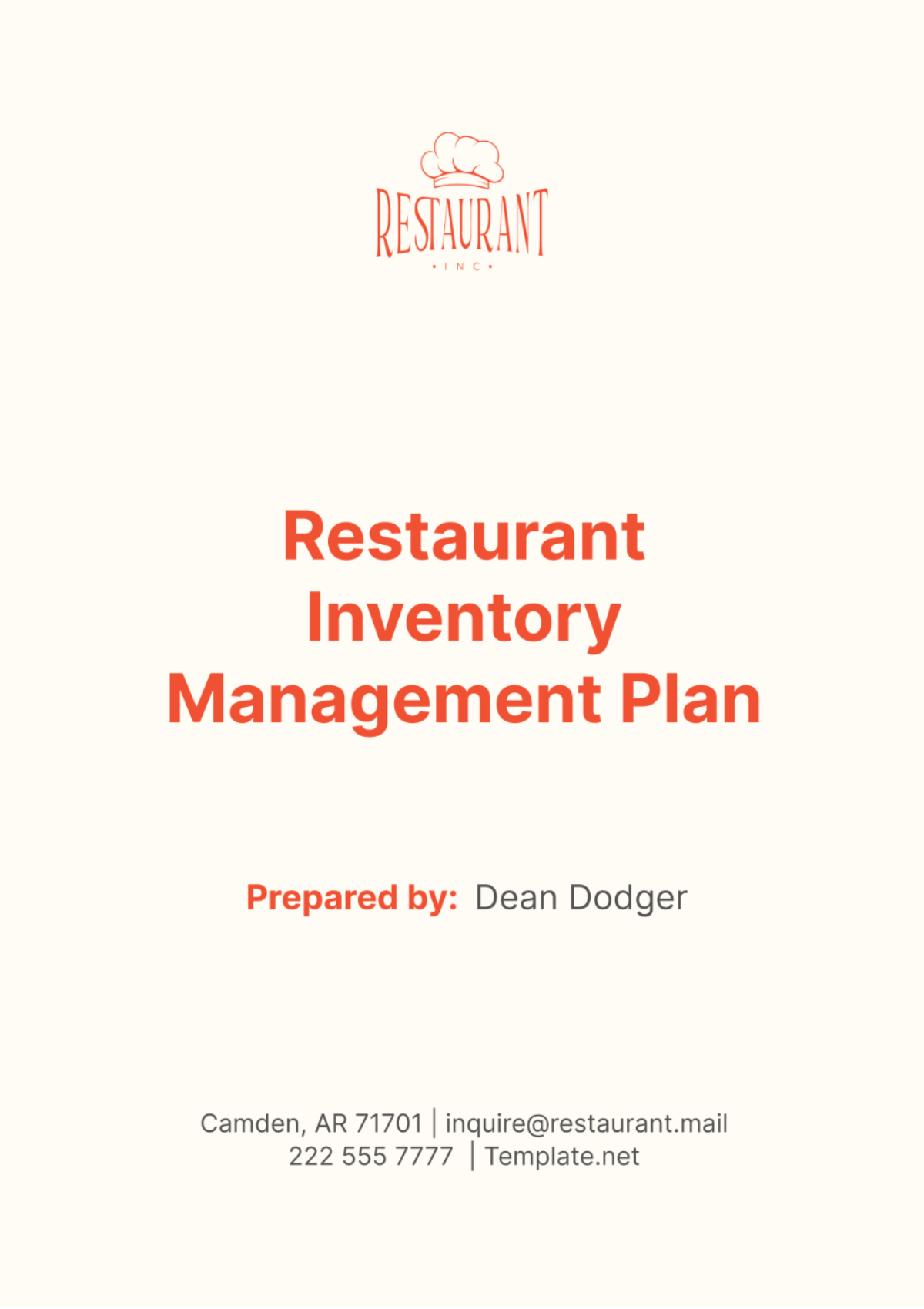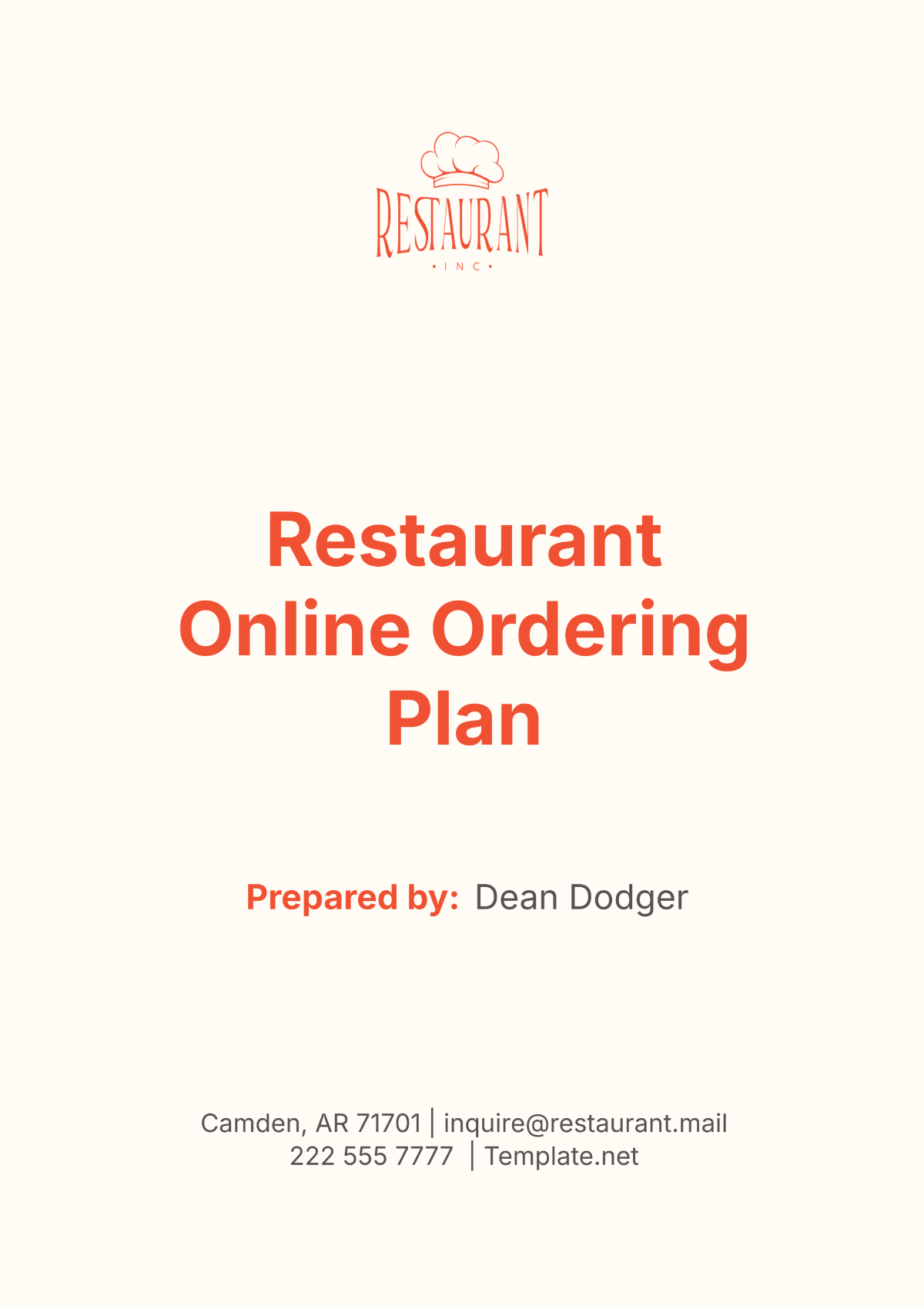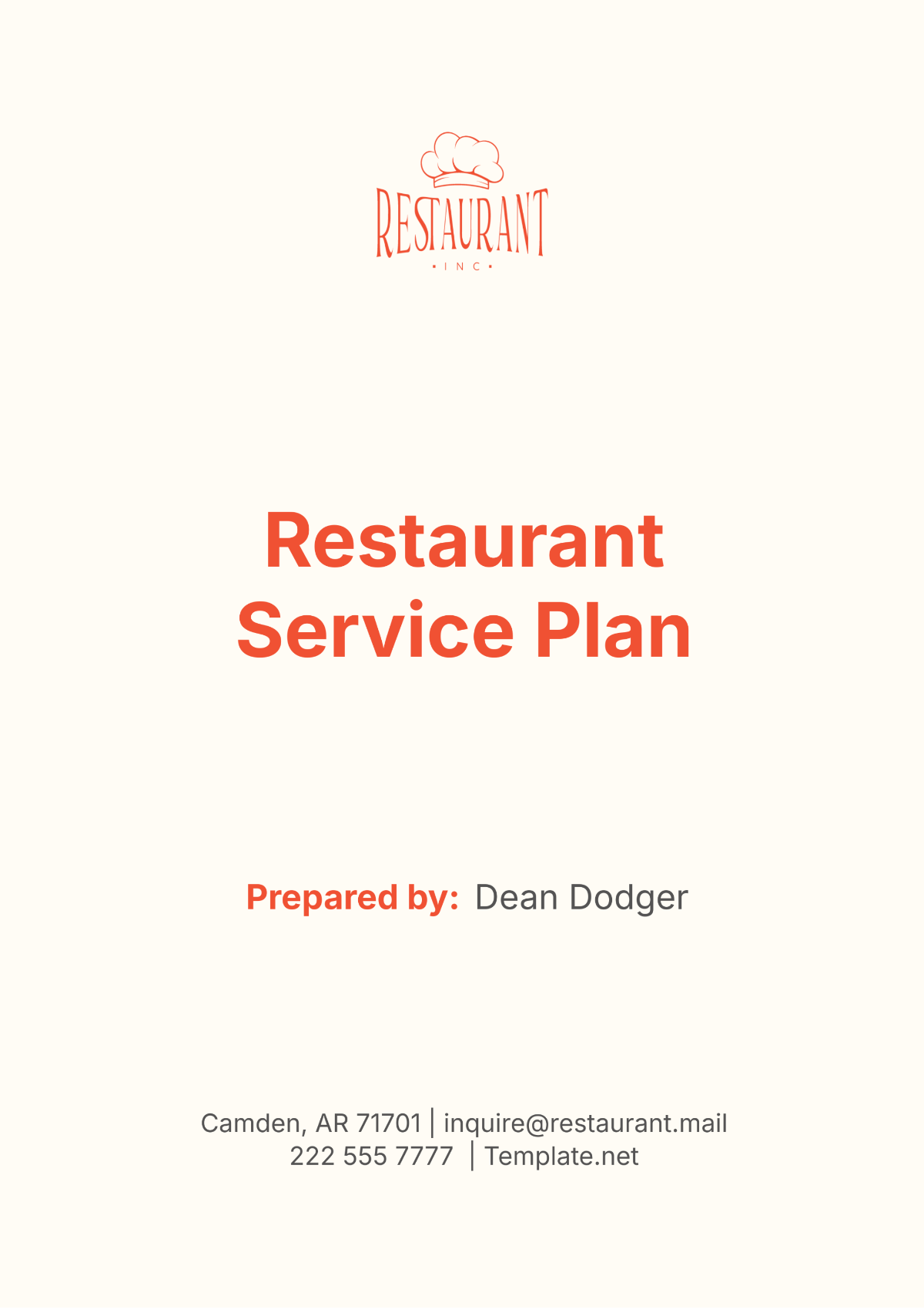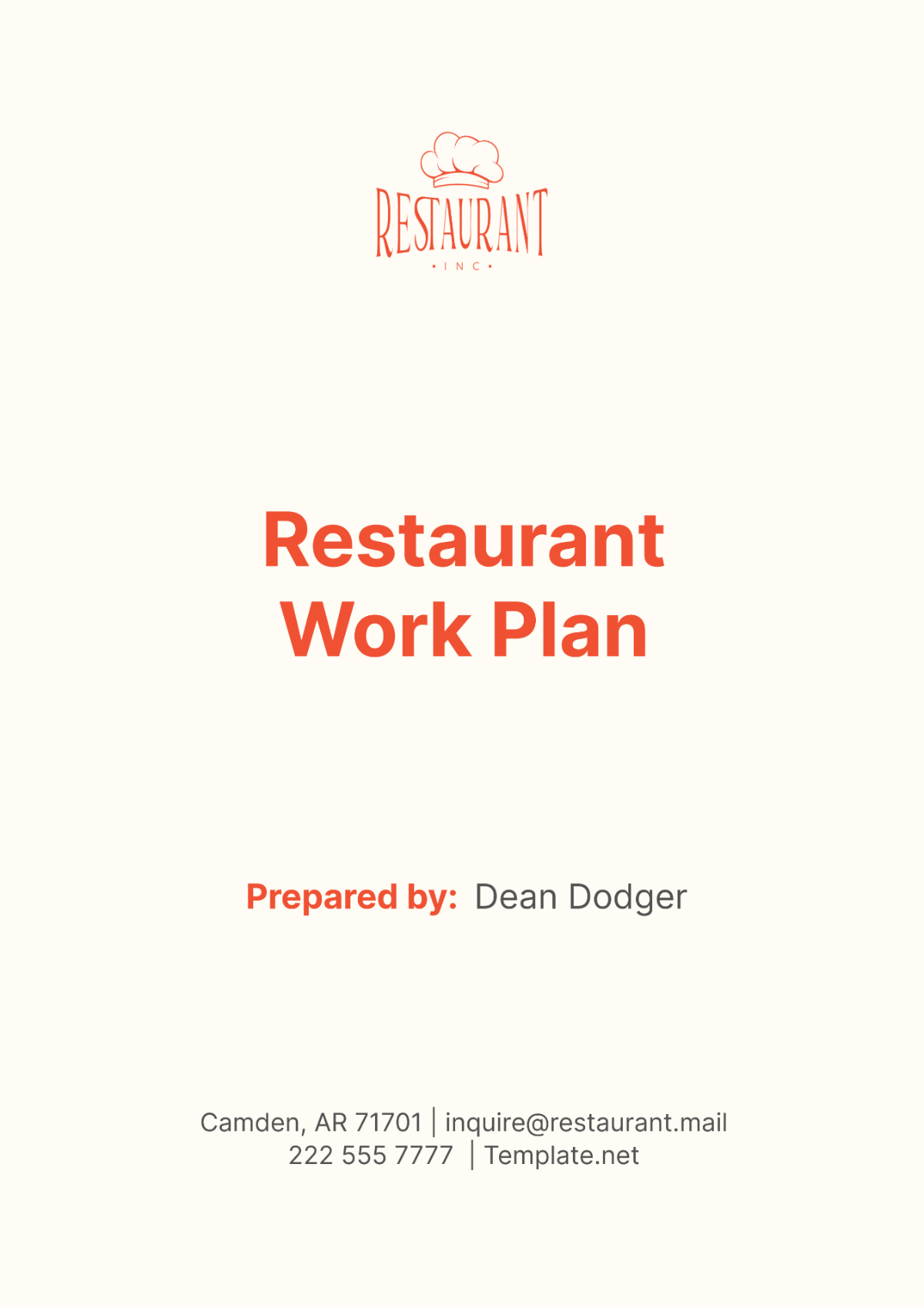Free Restaurant Operations Plan
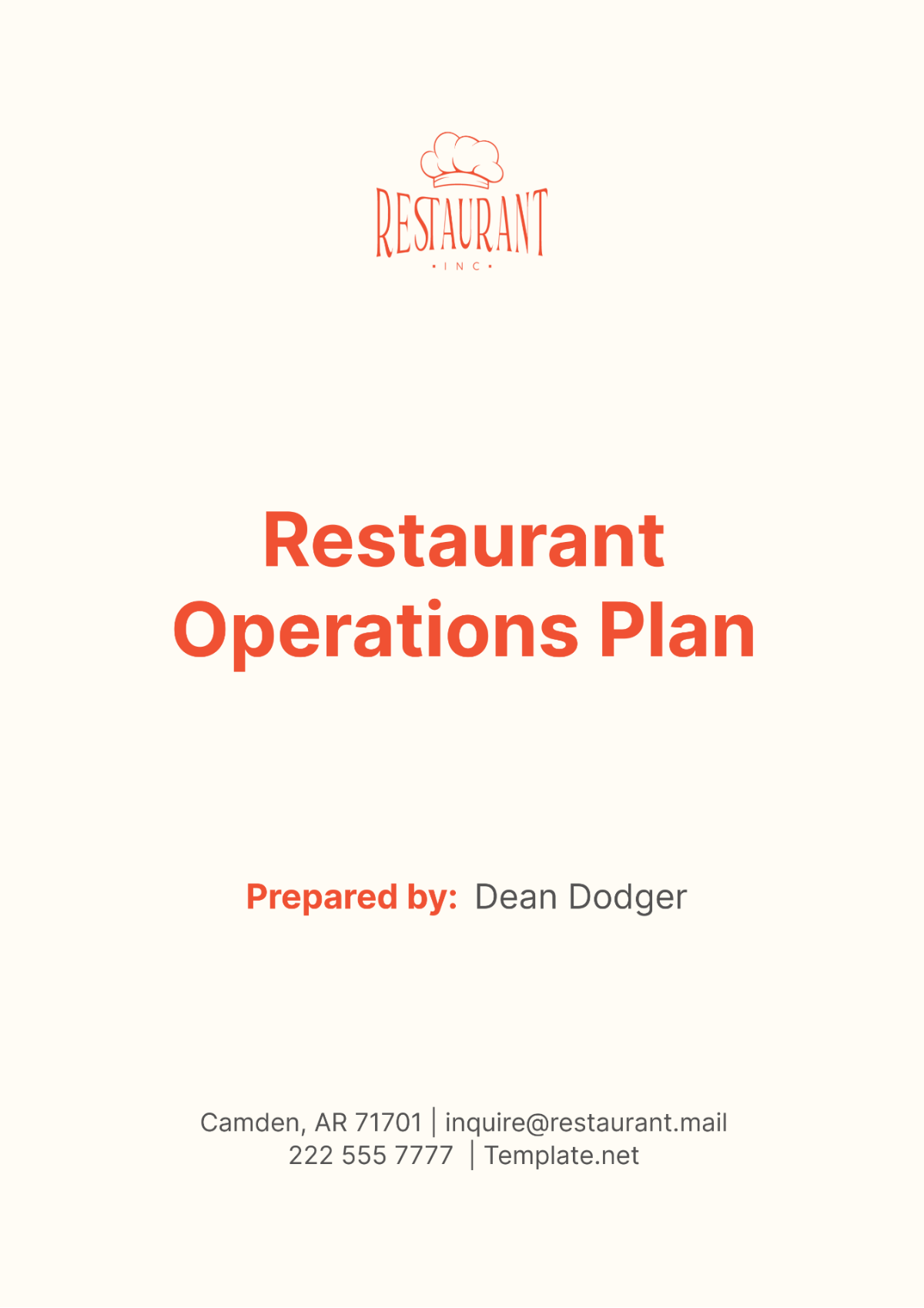
- 100% Customizable, free editor
- Access 1 Million+ Templates, photo’s & graphics
- Download or share as a template
- Click and replace photos, graphics, text, backgrounds
- Resize, crop, AI write & more
- Access advanced editor
Develop a comprehensive operations plan with the Restaurant Operations Plan Template available on Template.net! This versatile tool offers an editable format to document operational procedures and protocols. Utilize the customizable sections to tailor the plan to your specific needs. With the assistance of the AI Editor Tool, optimize operational efficiency!
You may also like
- Finance Plan
- Construction Plan
- Sales Plan
- Development Plan
- Career Plan
- Budget Plan
- HR Plan
- Education Plan
- Transition Plan
- Work Plan
- Training Plan
- Communication Plan
- Operation Plan
- Health And Safety Plan
- Strategy Plan
- Professional Development Plan
- Advertising Plan
- Risk Management Plan
- Restaurant Plan
- School Plan
- Nursing Home Patient Care Plan
- Nursing Care Plan
- Plan Event
- Startup Plan
- Social Media Plan
- Staffing Plan
- Annual Plan
- Content Plan
- Payment Plan
- Implementation Plan
- Hotel Plan
- Workout Plan
- Accounting Plan
- Campaign Plan
- Essay Plan
- 30 60 90 Day Plan
- Research Plan
- Recruitment Plan
- 90 Day Plan
- Quarterly Plan
- Emergency Plan
- 5 Year Plan
- Gym Plan
- Personal Plan
- IT and Software Plan
- Treatment Plan
- Real Estate Plan
- Law Firm Plan
- Healthcare Plan
- Improvement Plan
- Media Plan
- 5 Year Business Plan
- Learning Plan
- Marketing Campaign Plan
- Travel Agency Plan
- Cleaning Services Plan
- Interior Design Plan
- Performance Plan
- PR Plan
- Birth Plan
- Life Plan
- SEO Plan
- Disaster Recovery Plan
- Continuity Plan
- Launch Plan
- Legal Plan
- Behavior Plan
- Performance Improvement Plan
- Salon Plan
- Security Plan
- Security Management Plan
- Employee Development Plan
- Quality Plan
- Service Improvement Plan
- Growth Plan
- Incident Response Plan
- Basketball Plan
- Emergency Action Plan
- Product Launch Plan
- Spa Plan
- Employee Training Plan
- Data Analysis Plan
- Employee Action Plan
- Territory Plan
- Audit Plan
- Classroom Plan
- Activity Plan
- Parenting Plan
- Care Plan
- Project Execution Plan
- Exercise Plan
- Internship Plan
- Software Development Plan
- Continuous Improvement Plan
- Leave Plan
- 90 Day Sales Plan
- Advertising Agency Plan
- Employee Transition Plan
- Smart Action Plan
- Workplace Safety Plan
- Behavior Change Plan
- Contingency Plan
- Continuity of Operations Plan
- Health Plan
- Quality Control Plan
- Self Plan
- Sports Development Plan
- Change Management Plan
- Ecommerce Plan
- Personal Financial Plan
- Process Improvement Plan
- 30-60-90 Day Sales Plan
- Crisis Management Plan
- Engagement Plan
- Execution Plan
- Pandemic Plan
- Quality Assurance Plan
- Service Continuity Plan
- Agile Project Plan
- Fundraising Plan
- Job Transition Plan
- Asset Maintenance Plan
- Maintenance Plan
- Software Test Plan
- Staff Training and Development Plan
- 3 Year Plan
- Brand Activation Plan
- Release Plan
- Resource Plan
- Risk Mitigation Plan
- Teacher Plan
- 30 60 90 Day Plan for New Manager
- Food Safety Plan
- Food Truck Plan
- Hiring Plan
- Quality Management Plan
- Wellness Plan
- Behavior Intervention Plan
- Bonus Plan
- Investment Plan
- Maternity Leave Plan
- Pandemic Response Plan
- Succession Planning
- Coaching Plan
- Configuration Management Plan
- Remote Work Plan
- Self Care Plan
- Teaching Plan
- 100-Day Plan
- HACCP Plan
- Student Plan
- Sustainability Plan
- 30 60 90 Day Plan for Interview
- Access Plan
- Site Specific Safety Plan
Restaurant Operations Plan
I. Introduction
This Restaurant Operations Plan of [Your Company Name] outlines our approach to managing the day-to-day operations of our restaurant. This plan is designed to ensure the smooth running of our restaurant, deliver a high-quality dining experience to our customers, and achieve our business objectives.
A. Purpose
The purpose of this operations plan is to provide a clear and detailed guide for managing the various aspects of our restaurant operations. This includes everything from food preparation and service to staff management, customer service, and facility maintenance.
B. Scope
The scope of this operations plan covers all areas of our restaurant operations. This includes the kitchen, dining area, bar, restrooms, and outdoor seating area. It also covers all operational activities, including opening and closing procedures, food and beverage service, customer service, and cleaning and maintenance.
II. Operational Procedures
Operational procedures form the backbone of our restaurant’s daily operations. They ensure that every aspect of our restaurant, from food preparation to customer service, runs smoothly and efficiently. The following table provides an overview of these procedures:
No. | Procedure | Description |
|---|---|---|
1 | Opening Procedures | Preparing the restaurant for service before the doors open to customers. |
2 | Food and Beverage Service | All tasks related to preparing and serving food and drinks to customers. |
3 | Customer Service | All tasks related to interacting with customers and ensuring their satisfaction. |
4 | Cleaning and Maintenance | Keeping the restaurant clean and well-maintained. |
A. Opening Procedures
The opening procedures are crucial in setting the tone for the day’s operations. They involve:
Turning on Lights and Music: The ambiance of the restaurant is set by turning on the lights and playing music. This creates a welcoming atmosphere for the customers and motivates the staff to start the day on a positive note.
Setting Up Tables: Tables are set up with clean tablecloths, cutlery, and glassware. This meticulous setup ensures that we are ready to serve customers as soon as they arrive and reflects our attention to detail.
Preparing the Kitchen: The kitchen staff starts early to prepare for the day’s service. This includes prepping ingredients, setting up cooking stations, and ensuring all equipment is functioning properly. This preparation is key to delivering high-quality food throughout the day.
Briefing the Staff: A team briefing is held to discuss the day’s specials, reservations, and any other important information. This ensures that all staff members are on the same page and ready to provide excellent service.
Opening the Doors: Finally, the doors are opened to welcome our customers. This marks the start of our service and our commitment to providing an exceptional dining experience.
B. Food and Beverage Service
The food and beverage service procedures are at the heart of our restaurant operations. They involve:
Taking Orders: Servers take orders from customers, ensuring to note any special requests or dietary restrictions. This careful attention to customer preferences allows us to personalize our service and meet diverse dietary needs.
Preparing Food and Drinks: Our kitchen and bar staff work diligently to prepare orders accurately and efficiently. Their expertise and dedication ensure that our food and drinks meet the highest standards of quality and taste.
Serving Customers: Servers deliver the prepared food and drinks to the customers, ensuring that each dish goes to the correct customer. Their professionalism and efficiency contribute to a smooth dining experience.
Clearing Tables: After customers finish their meals, servers clear the tables promptly to maintain a clean and tidy dining area. This cleanliness enhances the dining experience and showcases our commitment to hygiene.
Handling Payments: Finally, servers handle the billing and payment process, ensuring a smooth and pleasant end to the dining experience. Their accuracy and courtesy in handling payments reflect our professionalism and respect for our customers.
C. Customer Service
Customer service procedures ensure that we provide a high-quality dining experience to all our customers. They involve:
Greeting Customers: We warmly greet all customers as they enter our restaurant, making them feel welcome and valued. This personal touch sets the tone for a positive dining experience.
Taking Reservations: We manage reservations efficiently to accommodate as many customers as possible without compromising the quality of our service. This efficient management reflects our commitment to customer satisfaction.
Handling Complaints: We handle any complaints promptly and professionally, always striving to resolve any issues to the customer’s satisfaction. This responsiveness shows our dedication to providing excellent customer service.
Providing Information: We provide customers with information about our menu, specials, and any other queries they might have. This transparency helps customers make informed choices and enhances their dining experience.
Saying Goodbye: We bid our customers goodbye as they leave, expressing our appreciation for their visit and inviting them to come again. This friendly farewell leaves a lasting positive impression and encourages repeat visits.
D. Cleaning and Maintenance
Cleaning and maintenance procedures ensure that our restaurant remains clean, safe, and comfortable for both our customers and staff. They involve:
Cleaning Tables and Floors: We clean tables and floors regularly to maintain a clean dining area. This regular cleaning ensures that our restaurant always looks its best and provides a clean and comfortable environment for our customers.
Washing Dishes: We wash dishes promptly and thoroughly to ensure a steady supply of clean cutlery, glassware, and dishware. This cleanliness is crucial for maintaining hygiene standards and providing a high-quality dining experience.
Maintaining Restrooms: We keep our restrooms clean and well-stocked with necessary supplies. This attention to detail ensures that our facilities meet the highest standards of cleanliness and comfort.
Carrying Out Regular Maintenance Tasks: We carry out regular maintenance tasks to keep our equipment and facilities in good condition. This proactive maintenance prevents issues before they occur and ensures the smooth running of our operations.
Closing Procedures: At the end of the day, we carry out closing procedures which include thorough cleaning and preparation for the next day. These procedures ensure that we are ready to start the next day on a positive note and continue providing excellent service.
The operational procedures are crucial for the smooth running of our restaurant. They ensure that every aspect of our restaurant operations, from opening to closing, is carried out efficiently and effectively. By adhering to these procedures, we can provide a high-quality dining experience to our customers and create a positive working environment for our staff.
Moreover, these procedures help us maintain high standards of cleanliness and safety in our restaurant. They ensure that our facilities are well-maintained and that our customers and staff can enjoy a clean and safe environment. By following these procedures, we demonstrate our commitment to excellence and our dedication to providing the best possible service to our customers. This commitment to operational excellence is what sets [Your Company Name] apart and ensures our continued success in the restaurant industry.
III. Staff Management
Effective staff management is crucial for the success of our restaurant. It ensures that our team works together efficiently and delivers a high-quality dining experience to our customers.
A. Staff Roles and Responsibilities
The staff roles and responsibilities section outlines the different roles within our restaurant team and their respective responsibilities. This includes roles such as:
Restaurant Manager: The restaurant manager oversees the entire operation of the restaurant. They are responsible for ensuring that all other staff members are performing their duties effectively and that the restaurant is running smoothly. They also handle administrative tasks such as scheduling, inventory management, and financial reporting.
Chef: The chef is in charge of the kitchen. They plan the menu, oversee food preparation, and ensure that the food served meets our high standards of quality and taste. They also manage the kitchen staff and ensure compliance with food safety regulations.
Server: Servers interact directly with our customers. They take orders, serve food and drinks, and ensure that our customers have a pleasant dining experience. They are also responsible for handling payments and addressing any customer complaints or queries.
Bartender: The bartender manages the bar area. They prepare and serve drinks, maintain the bar inventory, and ensure that the bar area is clean and well-organized. They also interact with customers and may take food orders for customers seated at the bar.
Dishwasher: The dishwasher is responsible for cleaning dishes, utensils, and kitchen equipment. They play a crucial role in maintaining cleanliness and hygiene in the restaurant.
B. Staff Scheduling
Staff scheduling is a critical component of our restaurant’s operations at [Your Company Name]. It ensures that we have the right number of staff members available at the right times to provide excellent service to our customers. Here are the key steps involved in our staff scheduling process:
Assessing Staffing Needs: We start by assessing our staffing needs for each shift. This involves considering factors such as expected customer volume, the complexity of tasks to be performed, and the skills required for those tasks.
Reviewing Staff Availability: Next, we review the availability of our staff members. We take into account their preferred working hours, as well as any time-off requests or other scheduling constraints they may have.
Creating the Schedule: Based on our staffing needs and staff availability, we create the schedule. We strive to balance the workload evenly among our staff members and ensure that all shifts are covered.
Communicating the Schedule: Once the schedule is created, we communicate it to our staff members. We ensure that they have ample time to review the schedule and prepare for their shifts.
Adjusting the Schedule as Needed: Finally, we remain flexible and ready to adjust the schedule as needed. If unexpected issues arise, such as a staff member calling in sick, we are prepared to make necessary adjustments to the schedule.
IV. Facility Management
A. Facility Maintenance
Facility maintenance at [Your Company Name] is an ongoing process that ensures our restaurant remains a safe, clean, and welcoming environment for both our staff and customers. Here are the key steps involved in our facility maintenance process:
Regular Inspections: We conduct regular inspections of our facilities to identify any potential issues or areas that need maintenance. These inspections are thorough and cover all areas of the restaurant, from the kitchen to the dining area, restrooms, and outdoor seating area.
Prioritizing Maintenance Tasks: After the inspection, we prioritize the maintenance tasks based on their urgency and impact on our operations. This helps us address the most critical issues first and plan our maintenance work efficiently.
Performing Maintenance Tasks: Our maintenance team then performs the necessary tasks, whether it’s fixing a leaky faucet or replacing a faulty appliance. They have the skills and tools necessary to carry out a wide range of maintenance tasks, ensuring that our facilities remain in top condition.
Checking Completed Tasks: After the maintenance tasks are completed, we check to ensure that they have been done properly and that the issue has been resolved. This quality control step is crucial for maintaining the high standards of our restaurant.
Scheduling Regular Maintenance: To prevent future issues, we schedule regular maintenance checks. This proactive approach helps us keep our facilities in top condition and avoid disruptions to our operations.
B. Health and Safety
Health and safety are paramount in our restaurant operations at [Your Company Name]. We are committed to providing a safe and healthy environment for both our staff and customers. Here are the key steps involved in our health and safety procedures:
Compliance with Health and Safety Regulations: We ensure that our restaurant complies with all local and national health and safety regulations. This involves staying up-to-date with the latest regulations and implementing them in our operations.
Regular Health and Safety Training: Our staff members receive regular training on health and safety practices. This training equips them with the knowledge and skills they need to maintain a safe and healthy working environment.
Maintaining Cleanliness: We maintain high standards of cleanliness in all areas of our restaurant. This involves regular cleaning of all areas, proper waste disposal, and strict adherence to food safety practices.
Ensuring Safe Work Practices: We ensure that all work practices are safe and do not pose any risk to our staff or customers. This includes safe food handling practices, proper use of equipment, and adherence to fire safety regulations.
Responding to Health and Safety Incidents: In the event of a health or safety incident, we have procedures in place to respond quickly and effectively. This includes providing first aid, reporting the incident, and taking corrective action to prevent similar incidents in the future.
V. Next Steps
The next steps in our operations plan at [Your Company Name] involve putting our plan into action and monitoring its effectiveness. Here are the key steps we will be taking:
A. Implementing the Plan
We will start by implementing the procedures and practices outlined in our operations plan. This involves training our staff on these procedures, setting up the necessary systems and processes, and ensuring that all aspects of our operations align with the plan.
B. Monitoring and Evaluation
Once the plan is in place, we will monitor its effectiveness. This involves tracking key performance indicators, gathering feedback from our staff and customers, and regularly reviewing our operations to identify any areas for improvement.
C. Continuous Improvement
Based on our monitoring and evaluation, we will make necessary adjustments to our operations plan. This could involve refining our procedures, providing additional training to our staff, or making changes to our facilities or equipment. Our goal is to continuously improve our operations and provide the best possible dining experience to our customers.
D. Regular Reviews
We will conduct regular reviews of our operations plan to ensure that it remains relevant and effective. These reviews will take into account changes in our business environment, customer preferences, and industry trends.
By following these next steps, we aim to successfully implement our operations plan and achieve our business objectives. We look forward to serving our customers with excellence and making [Your Company Name] a preferred dining destination.
